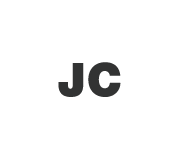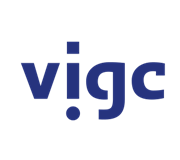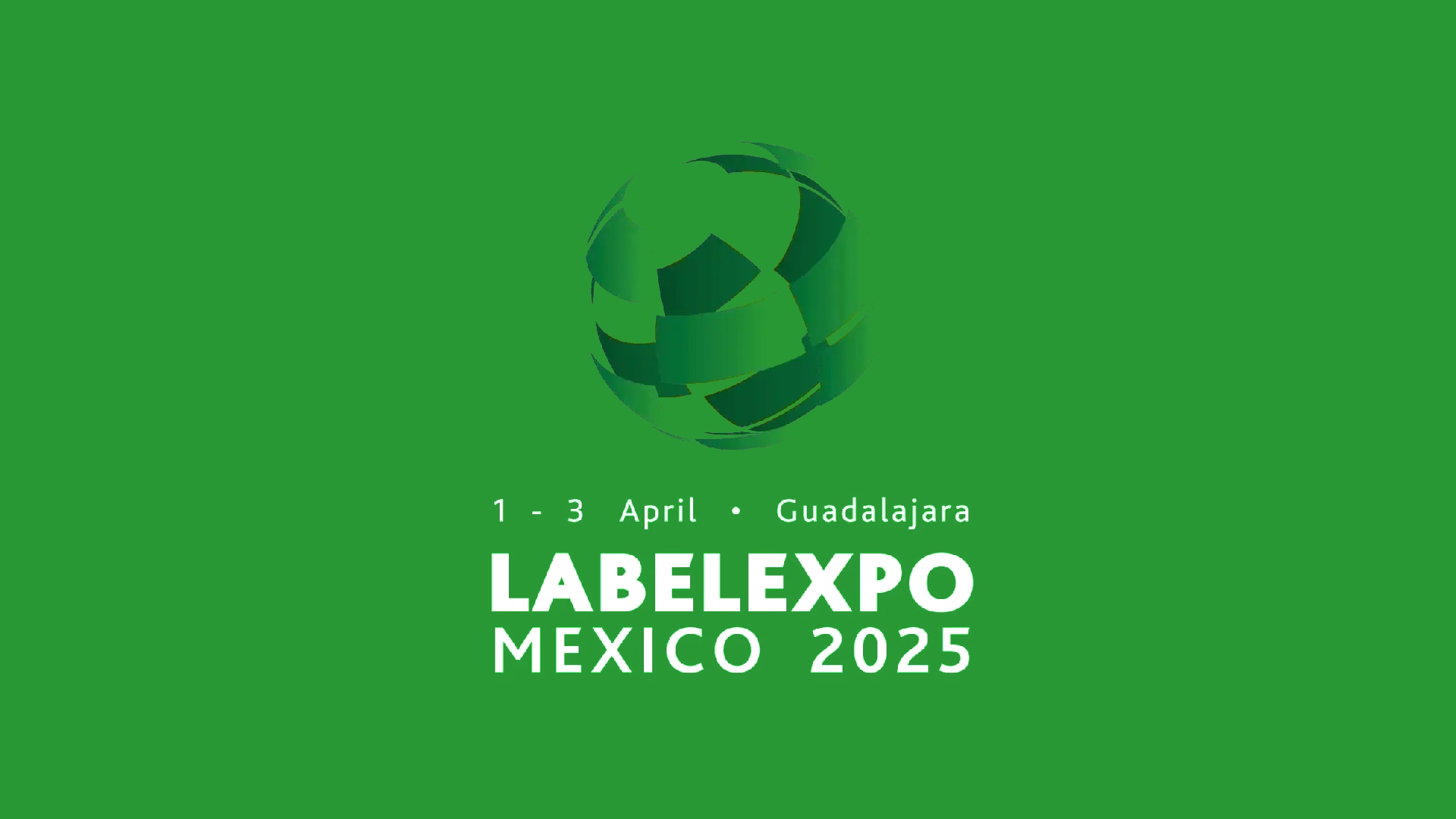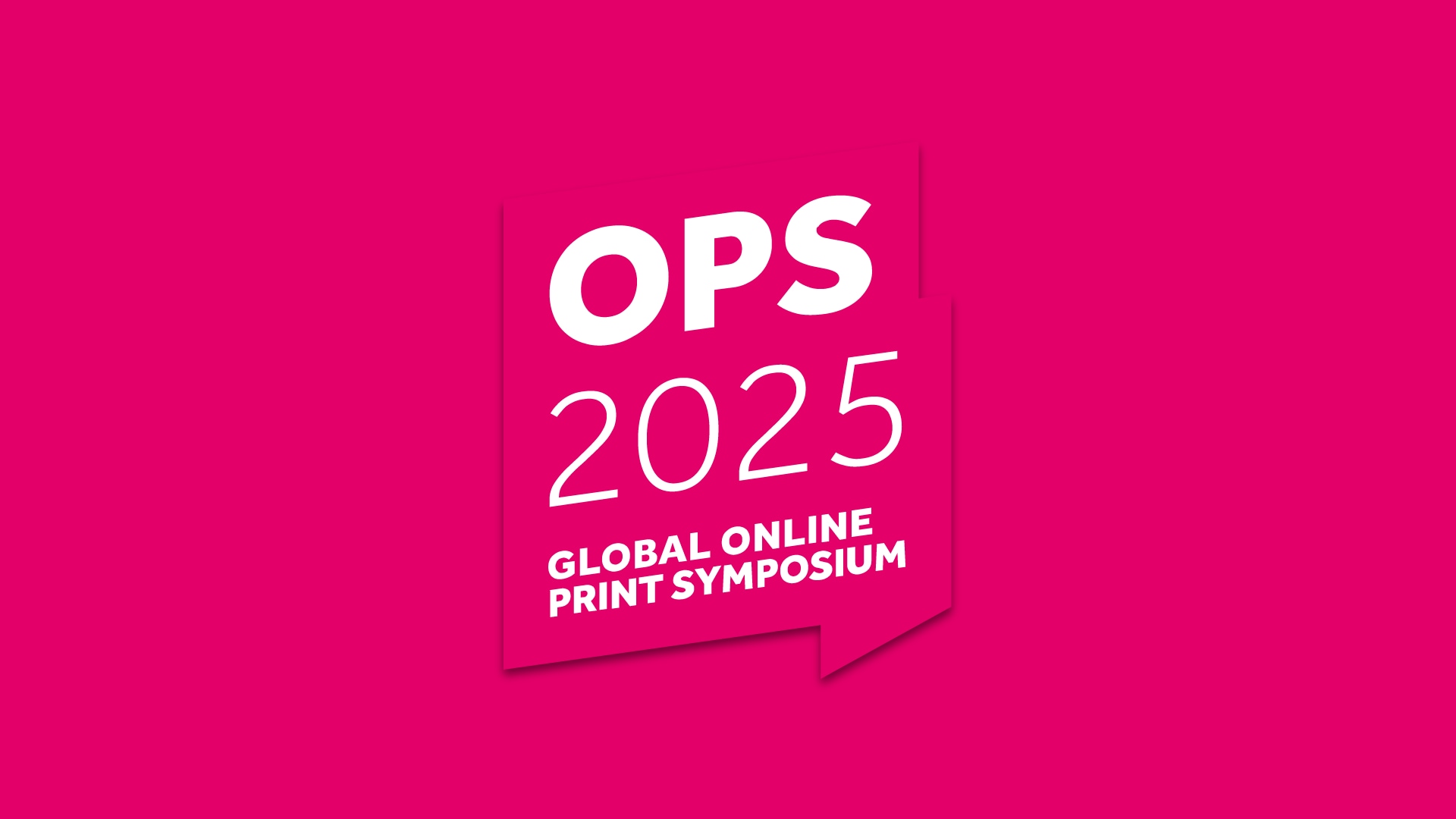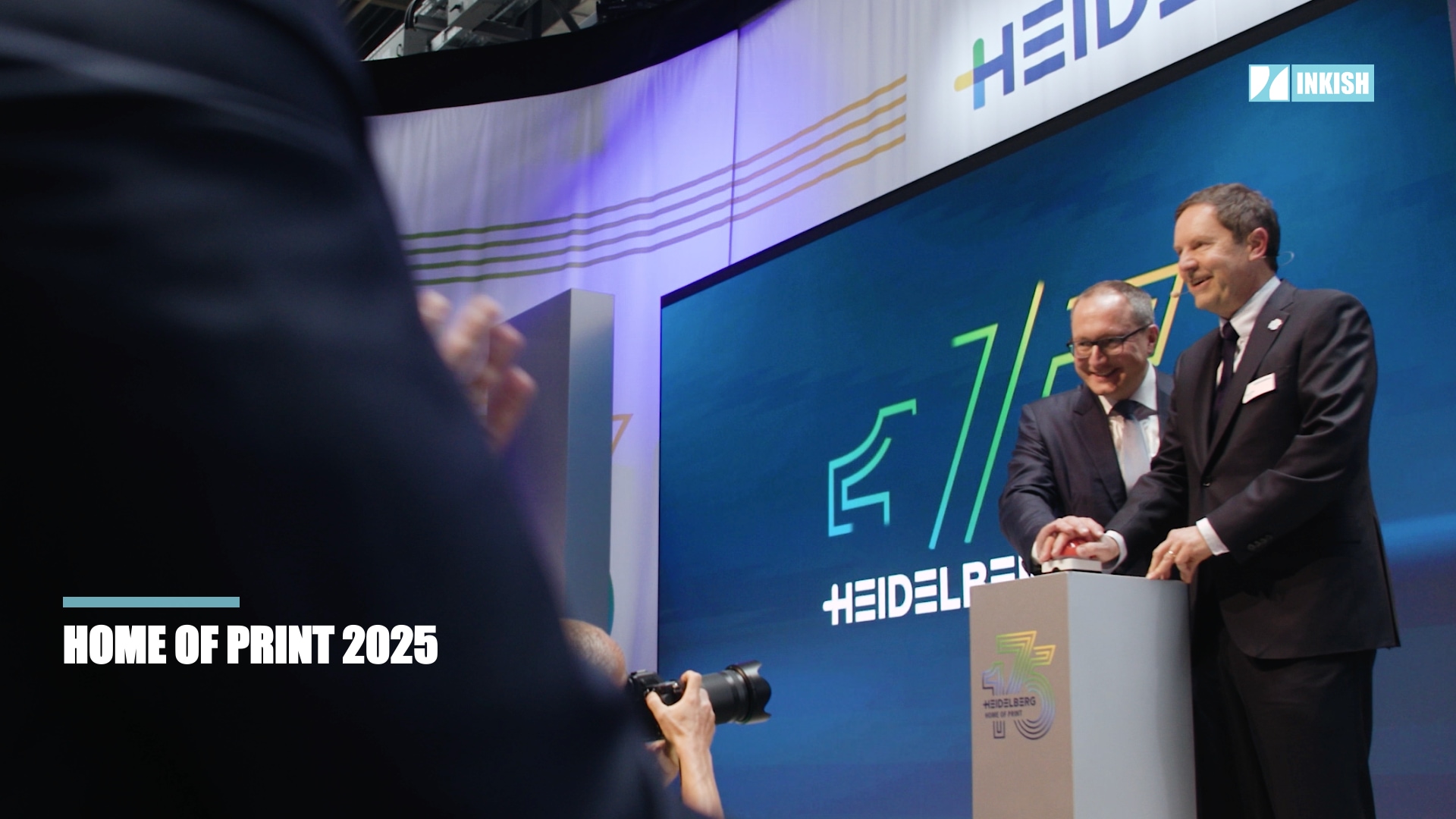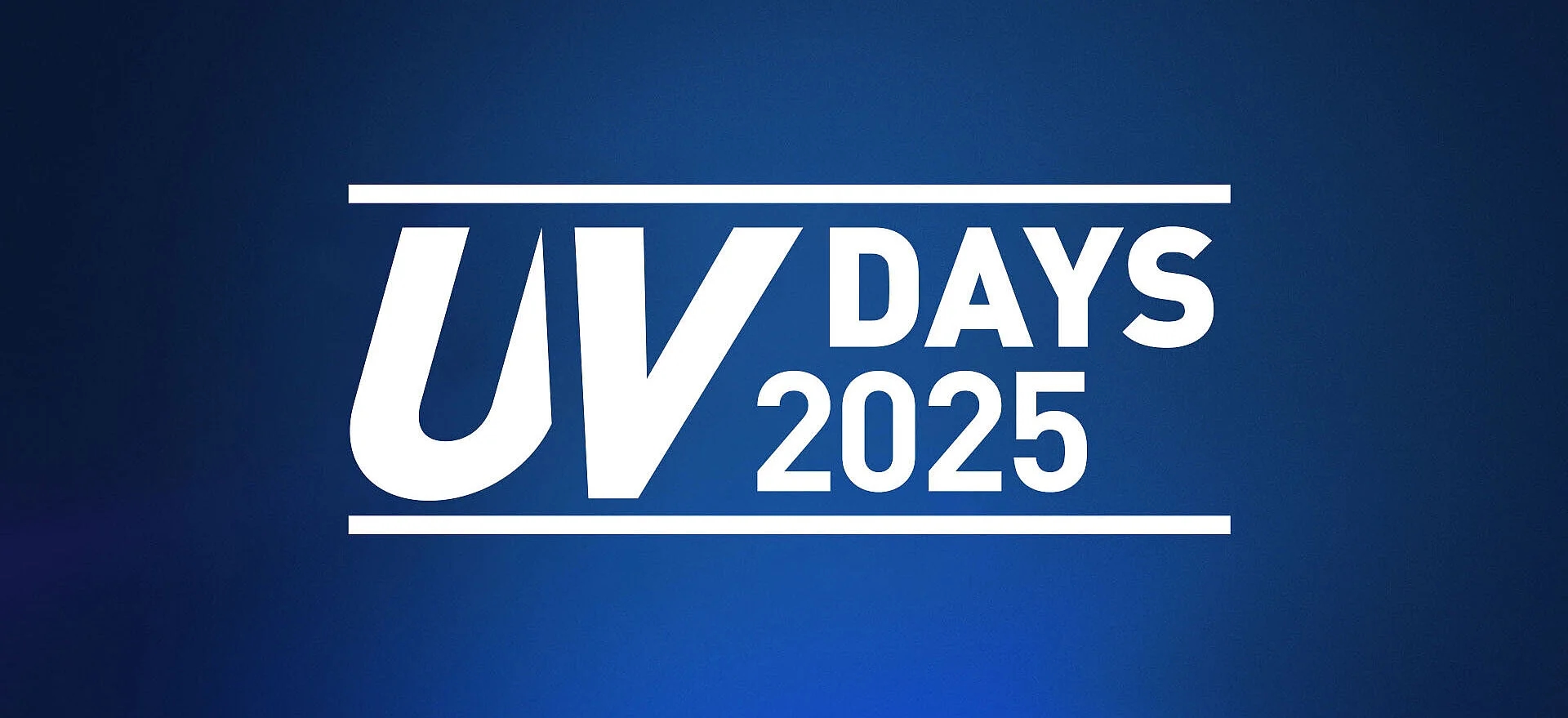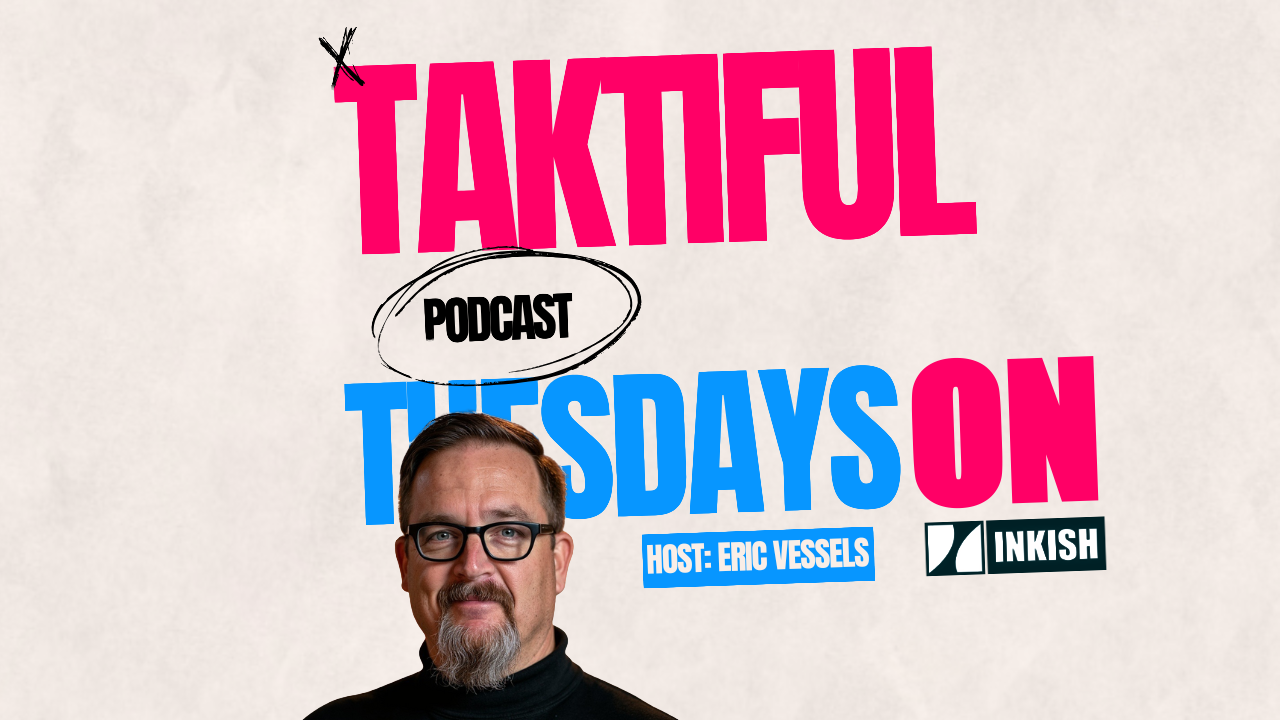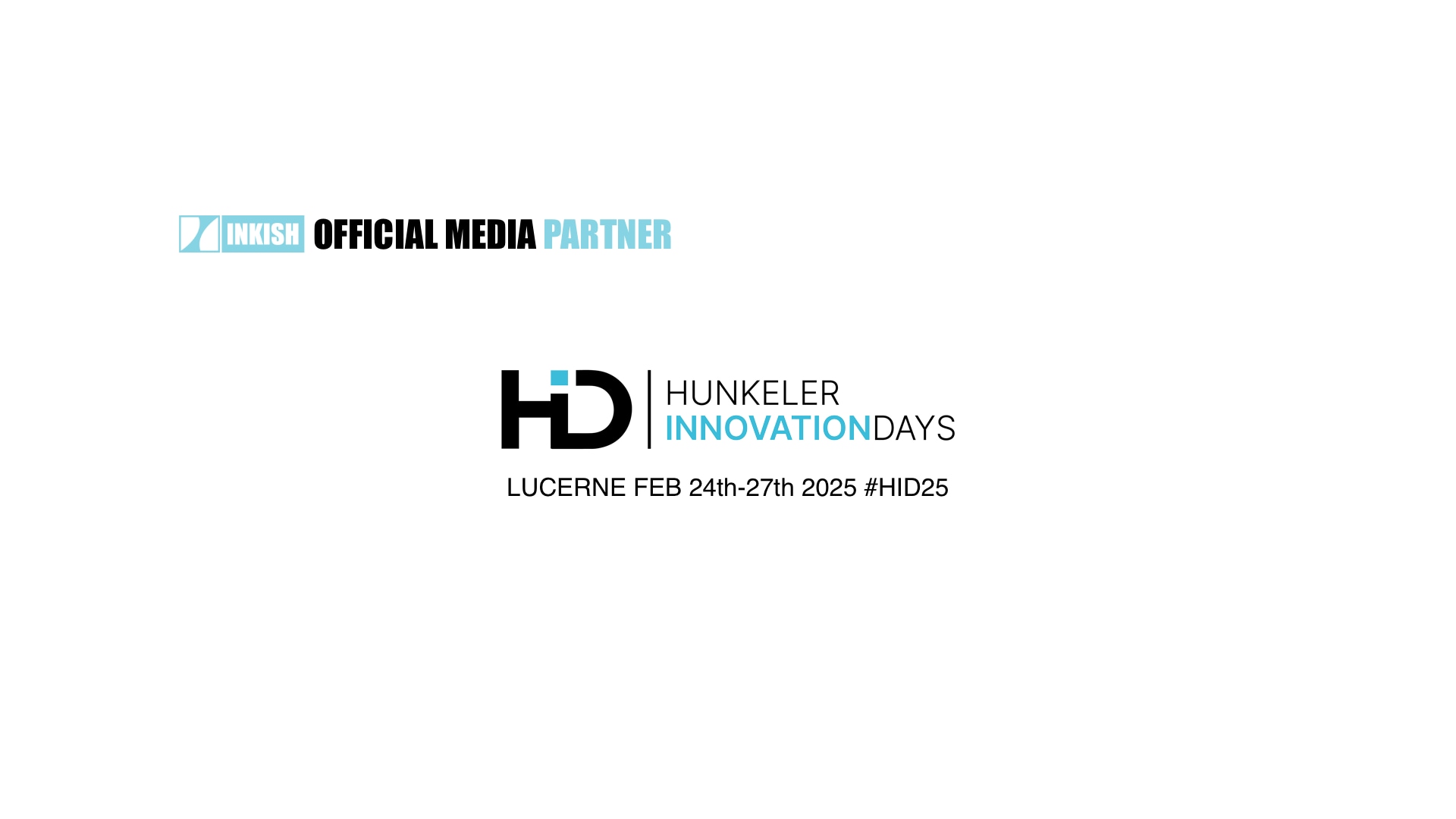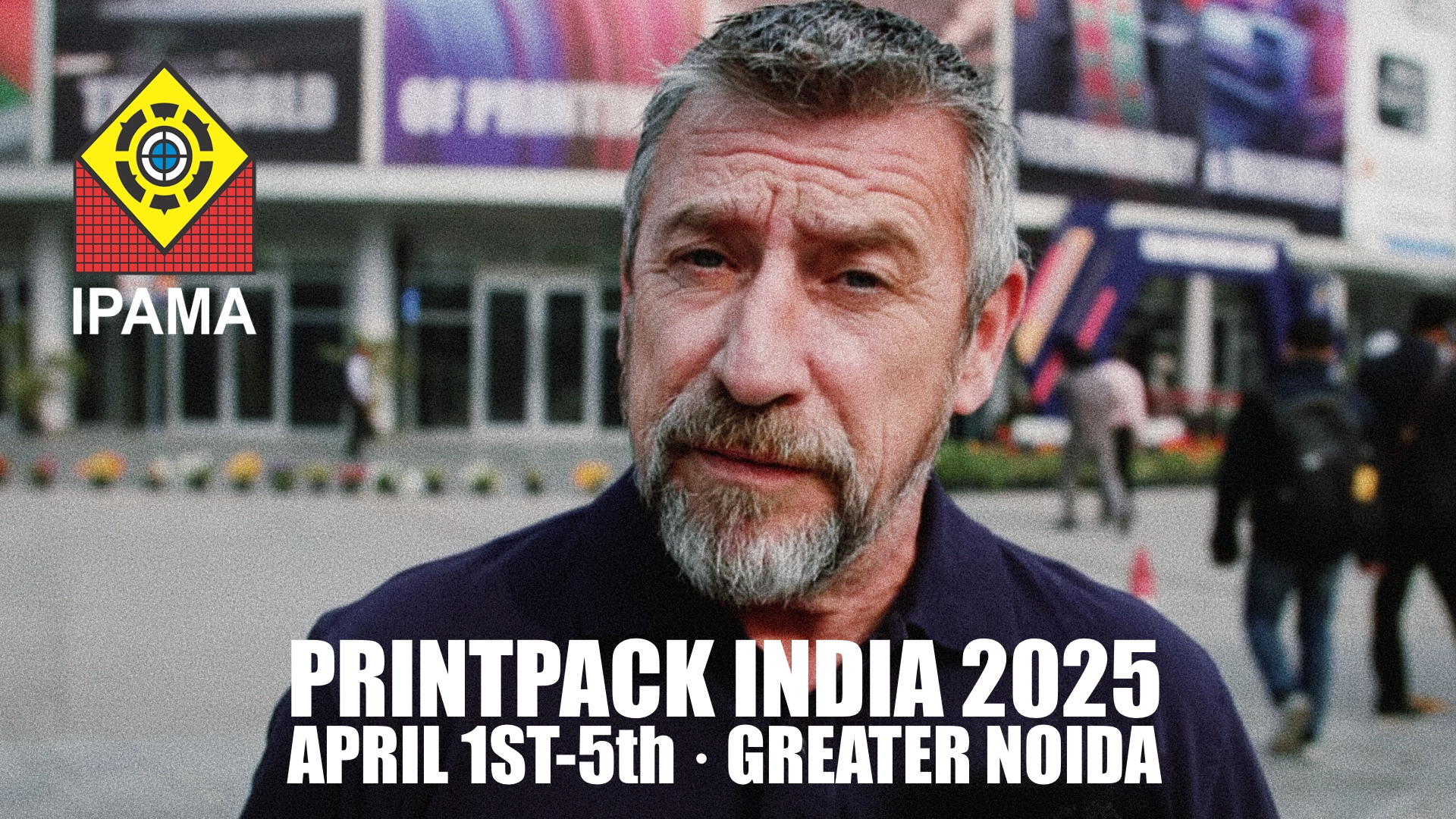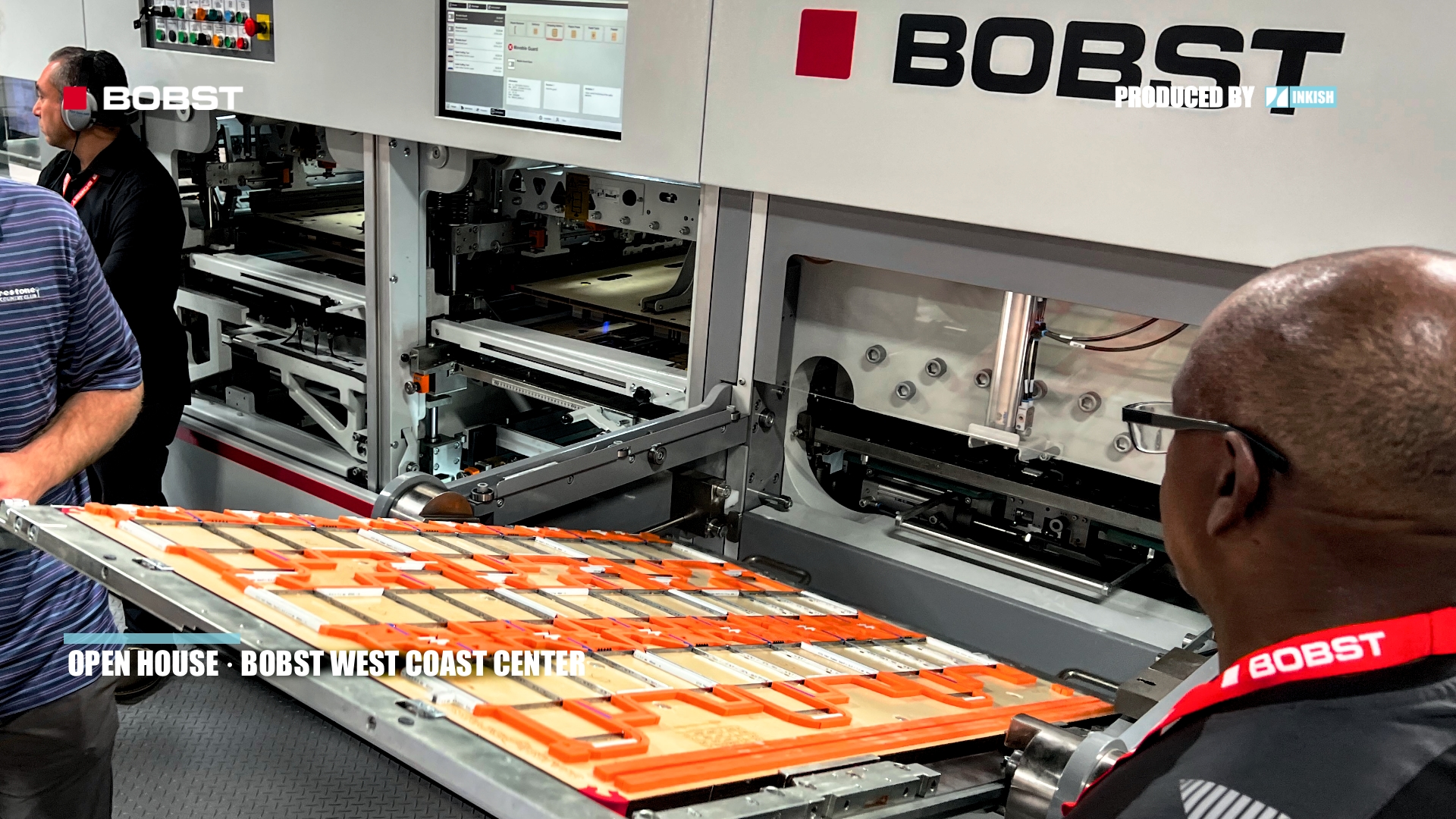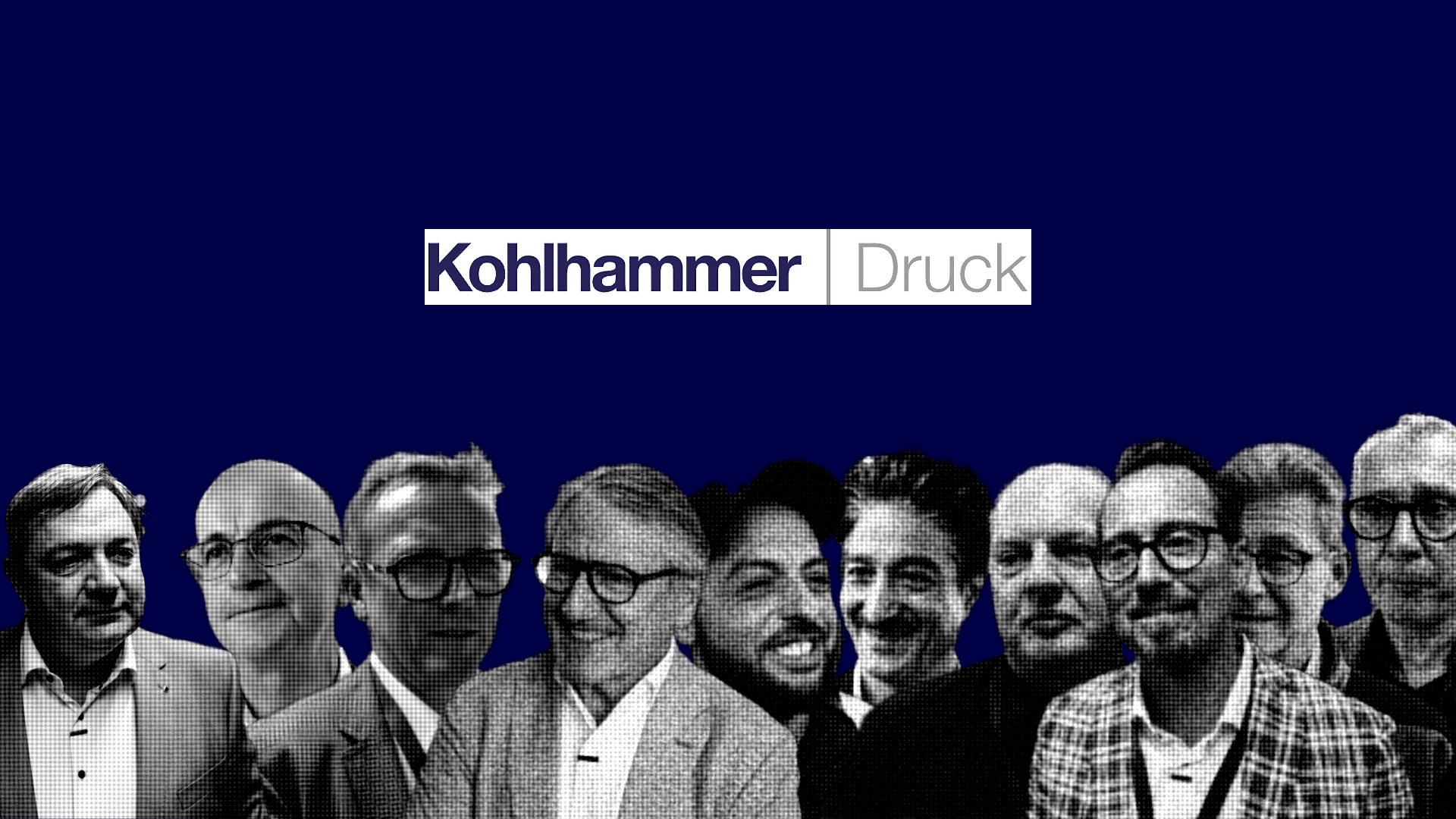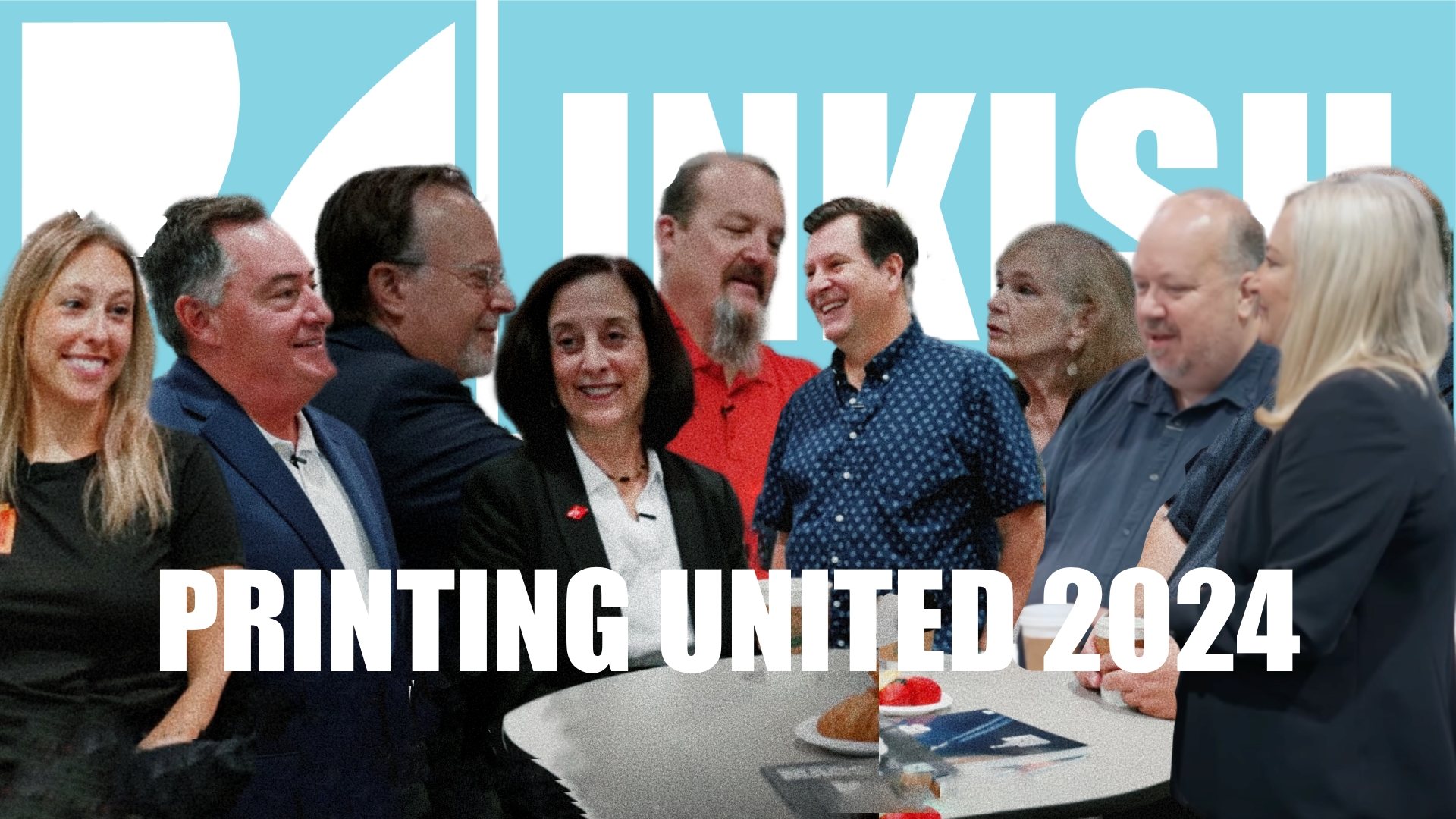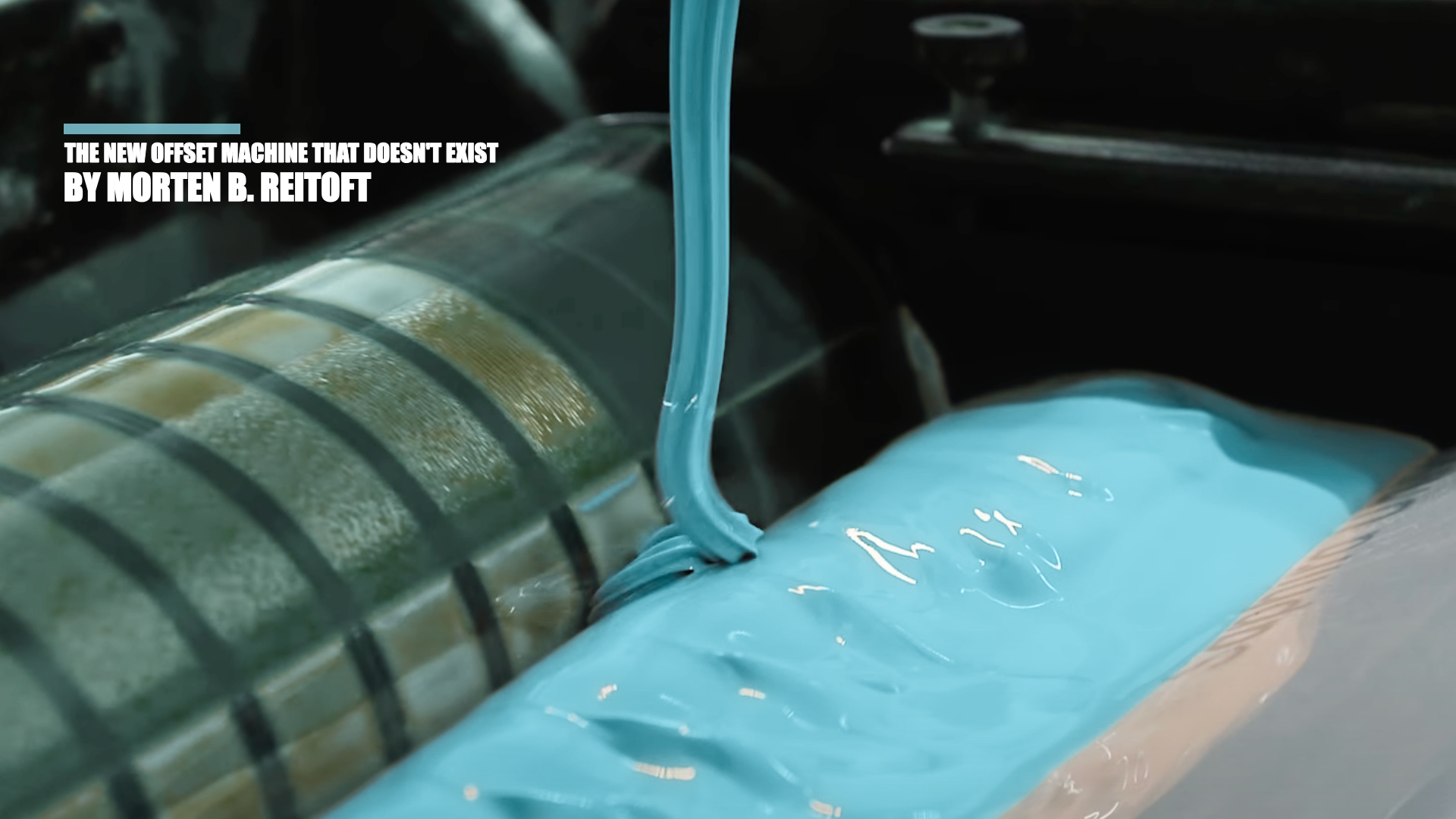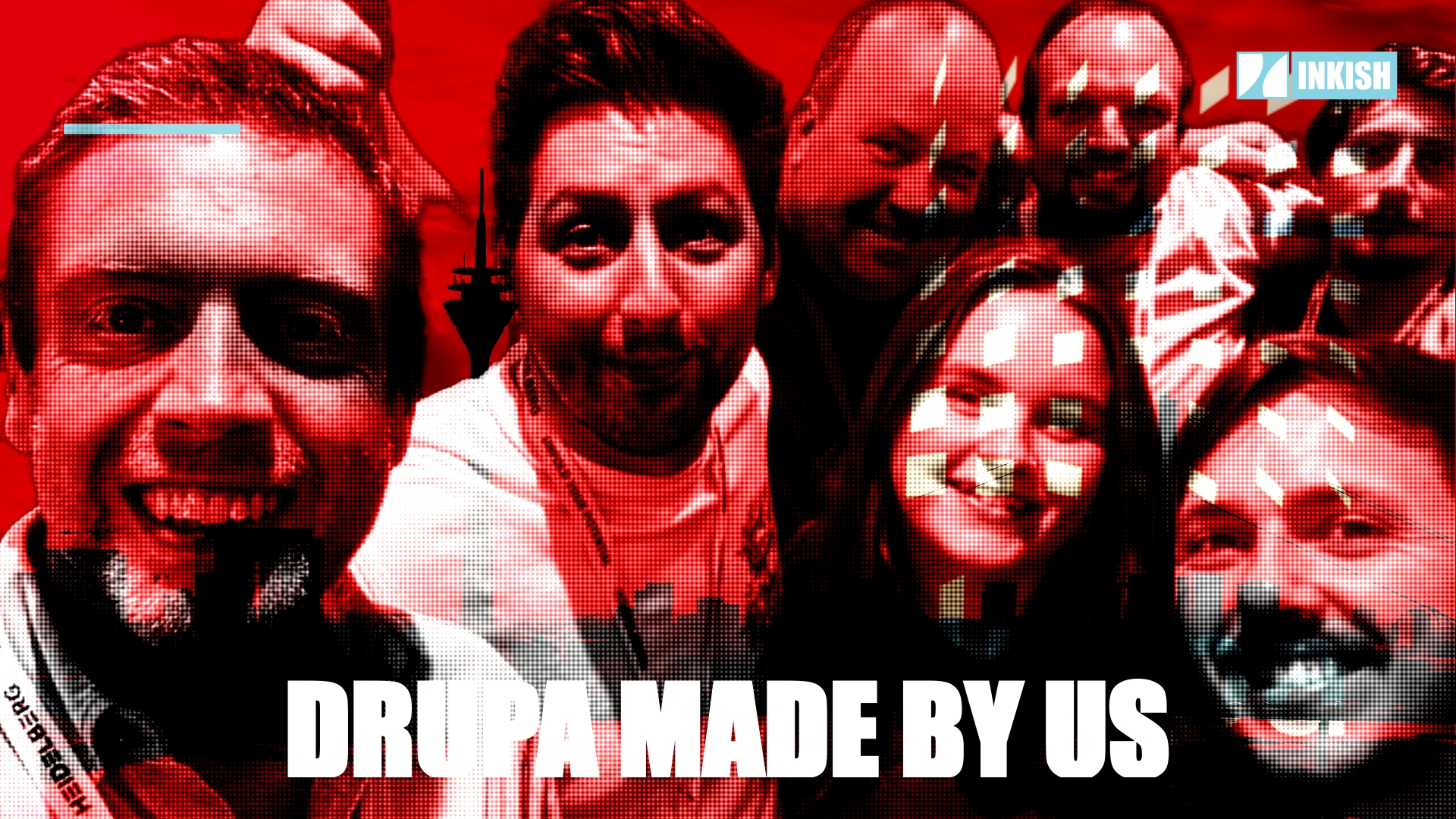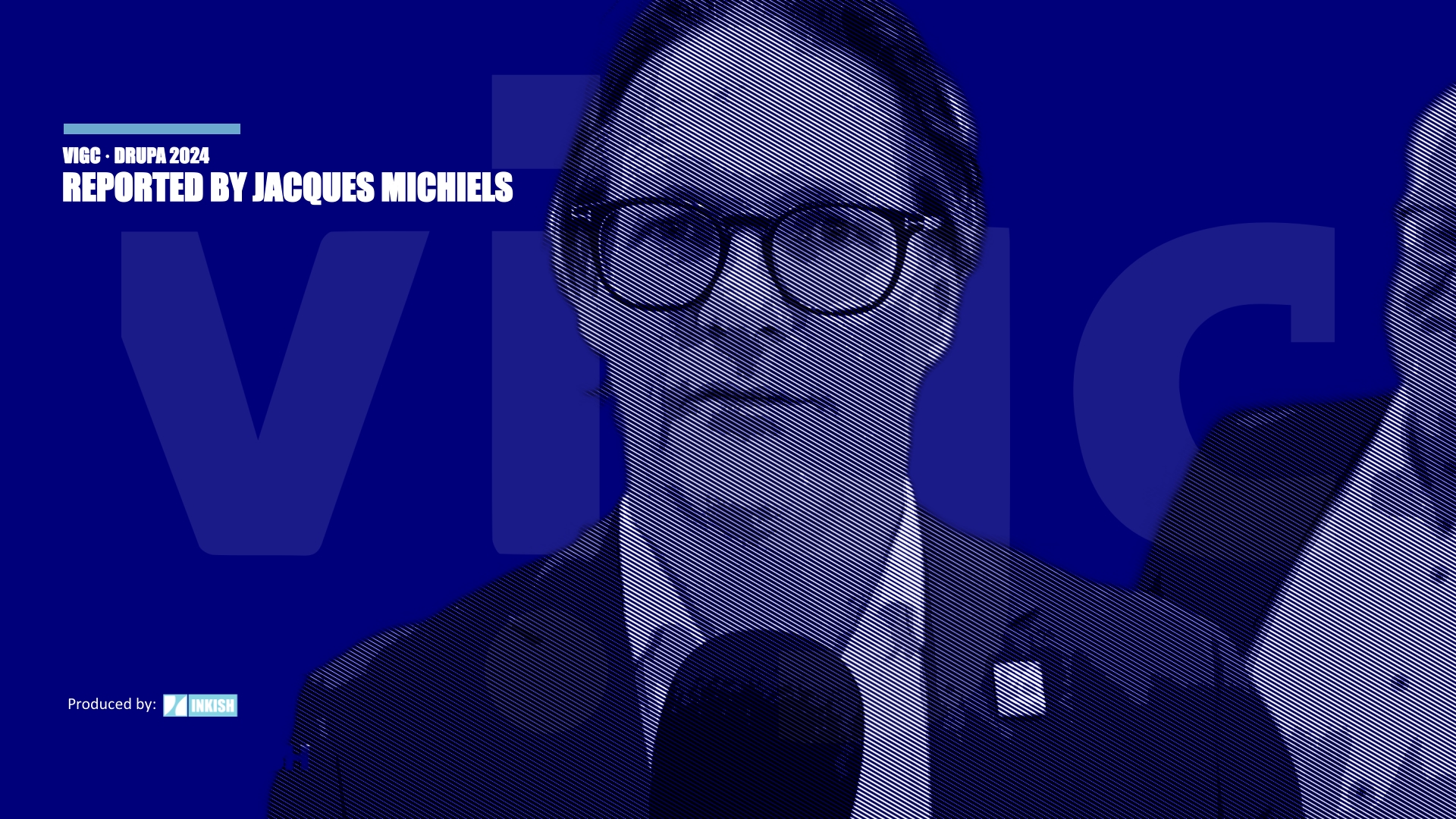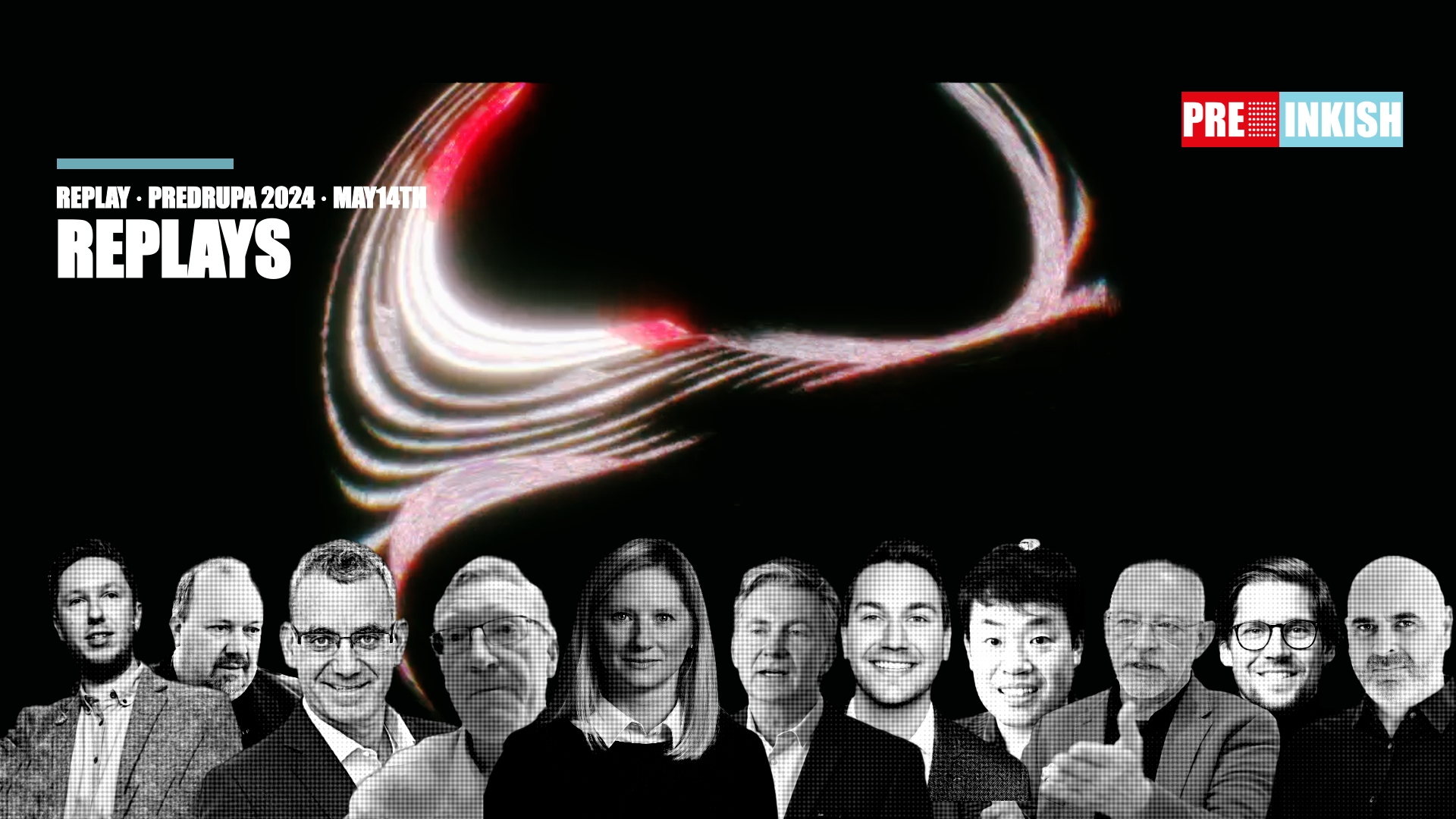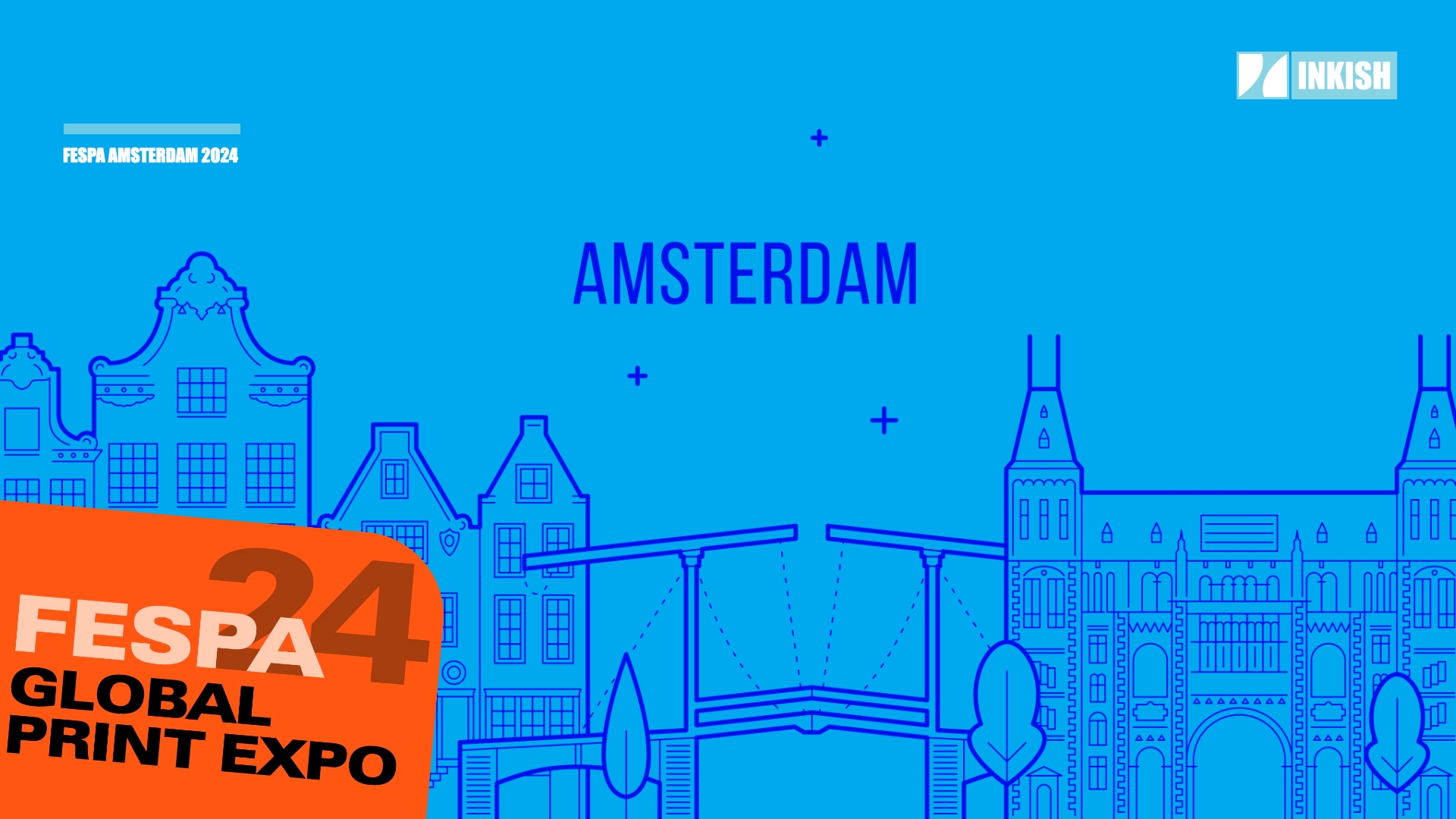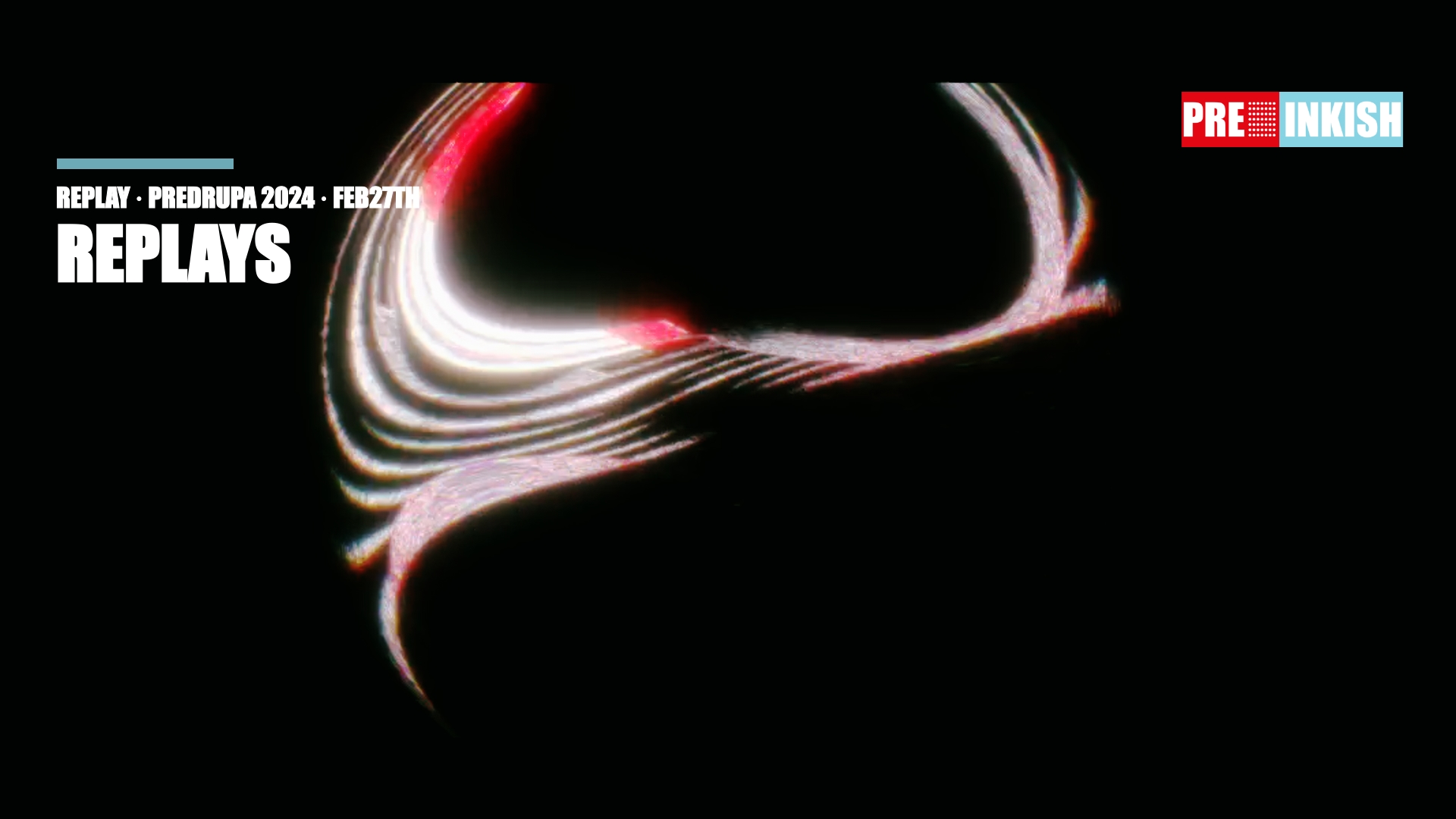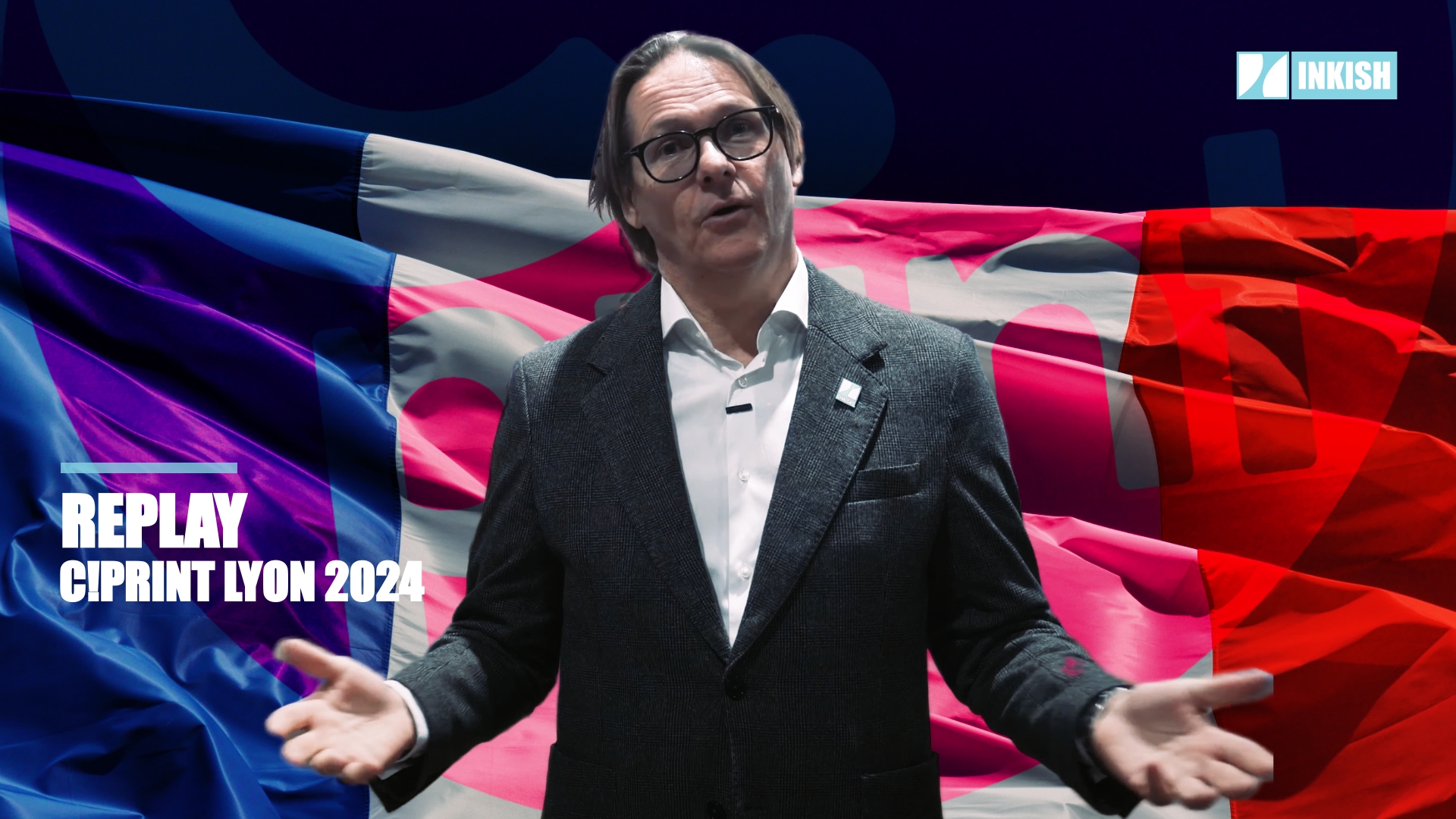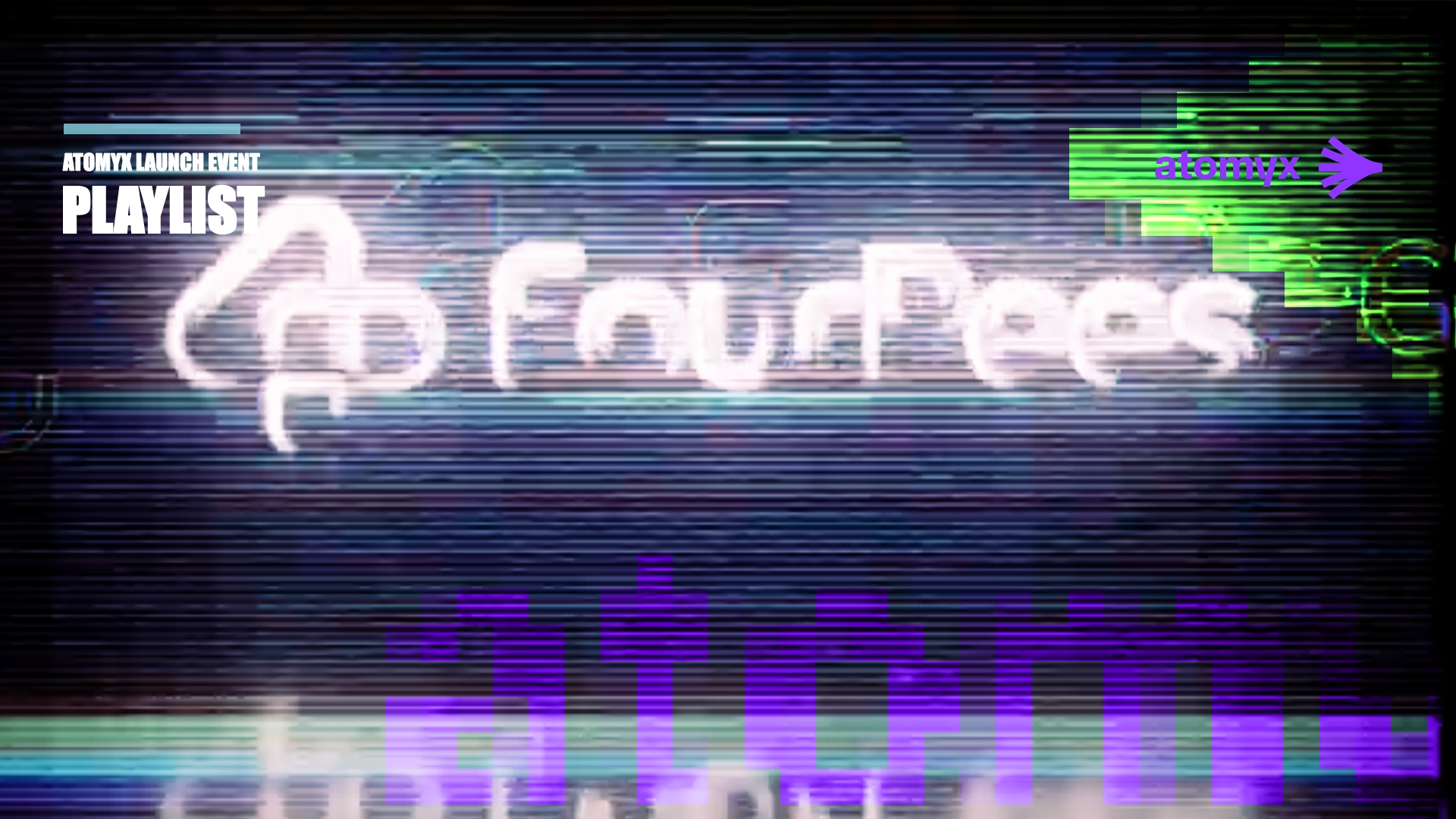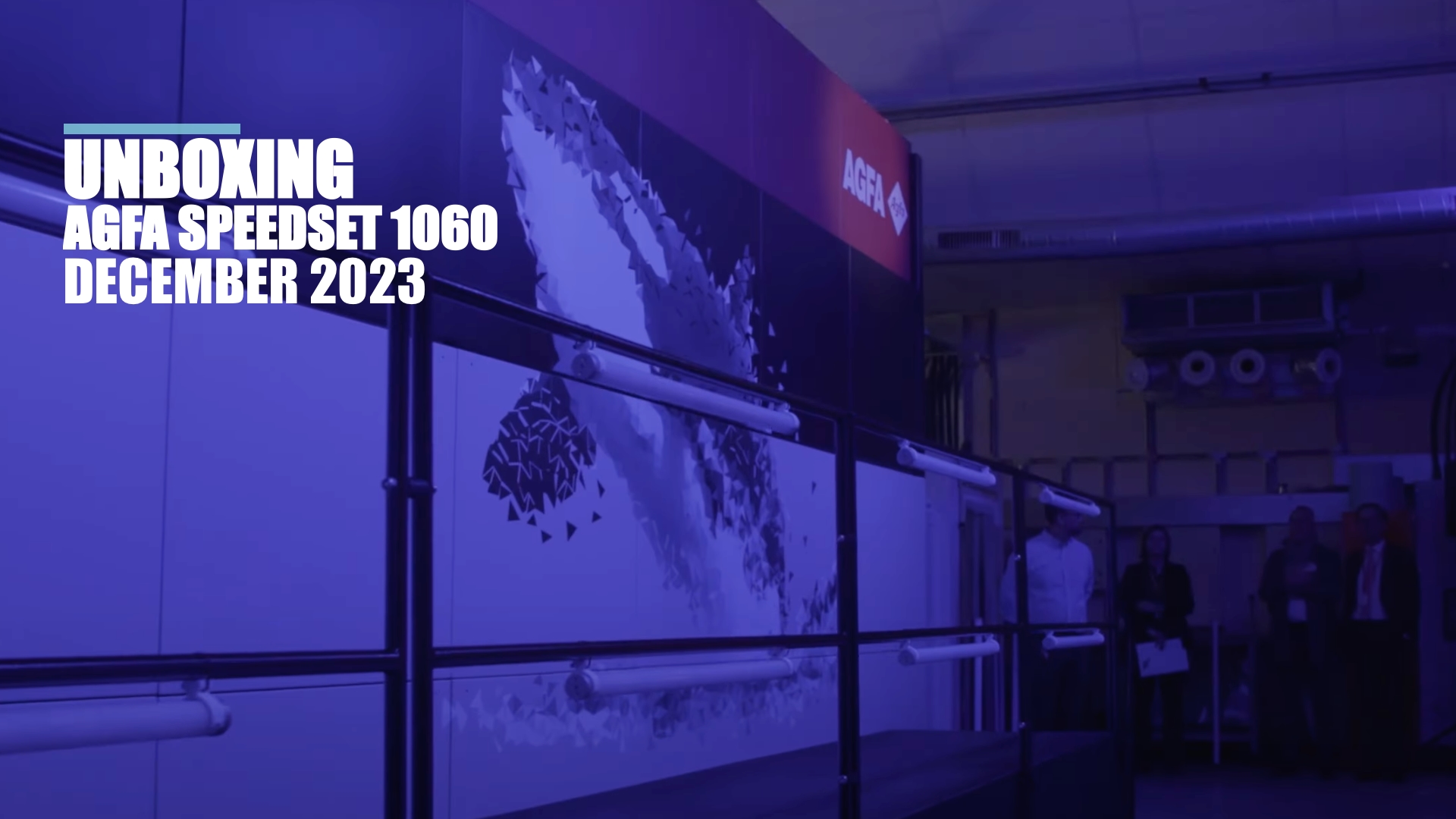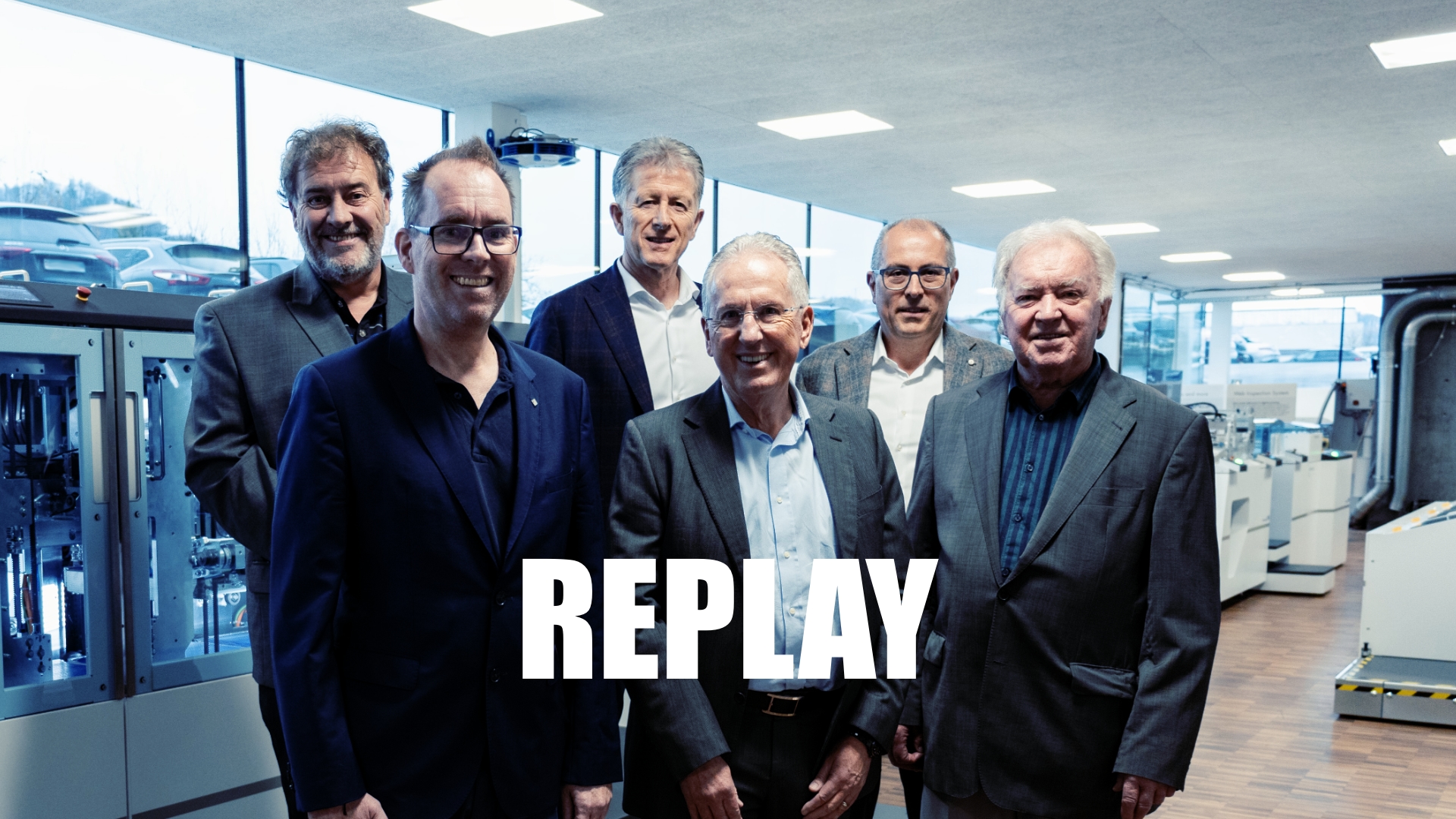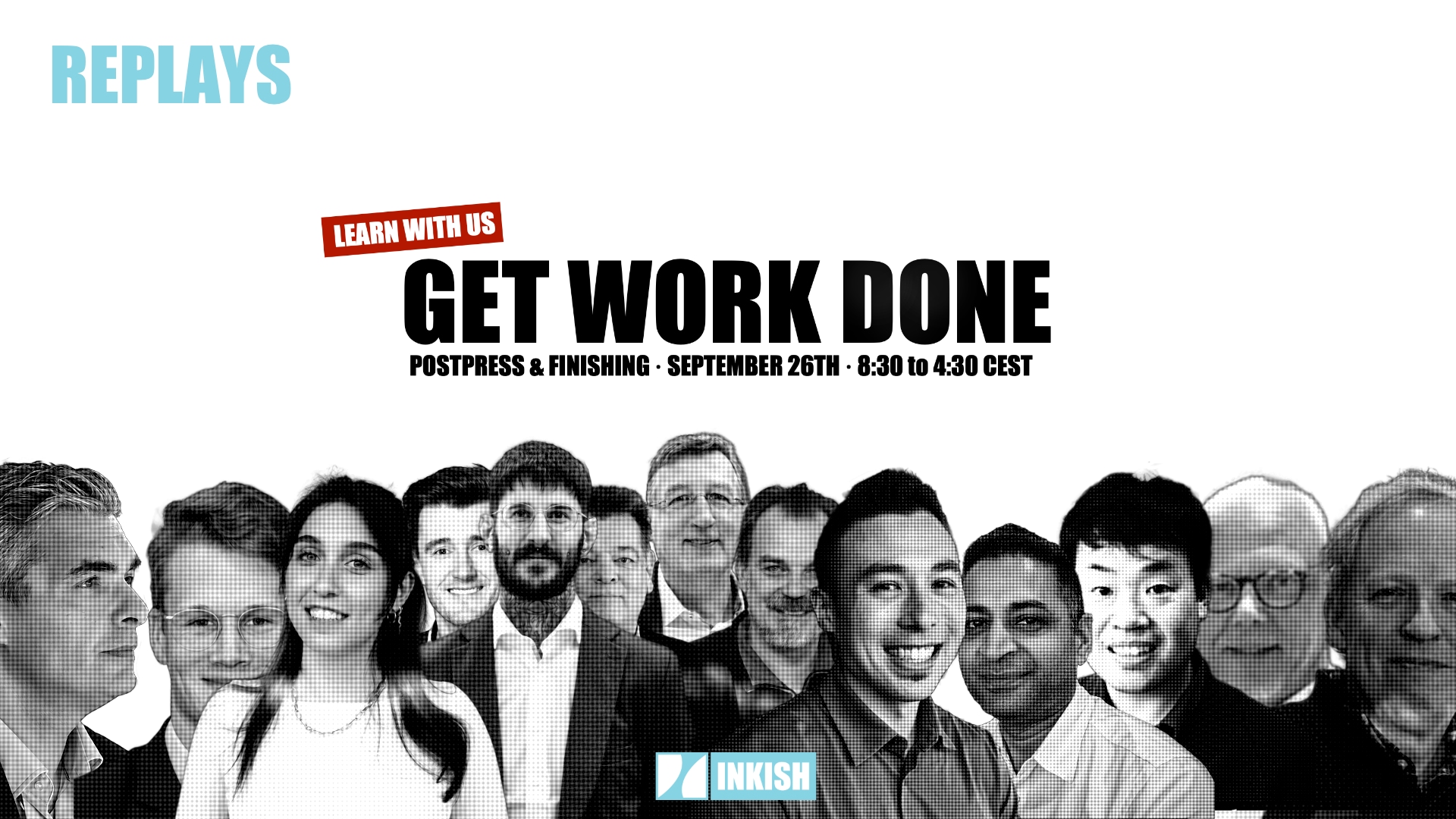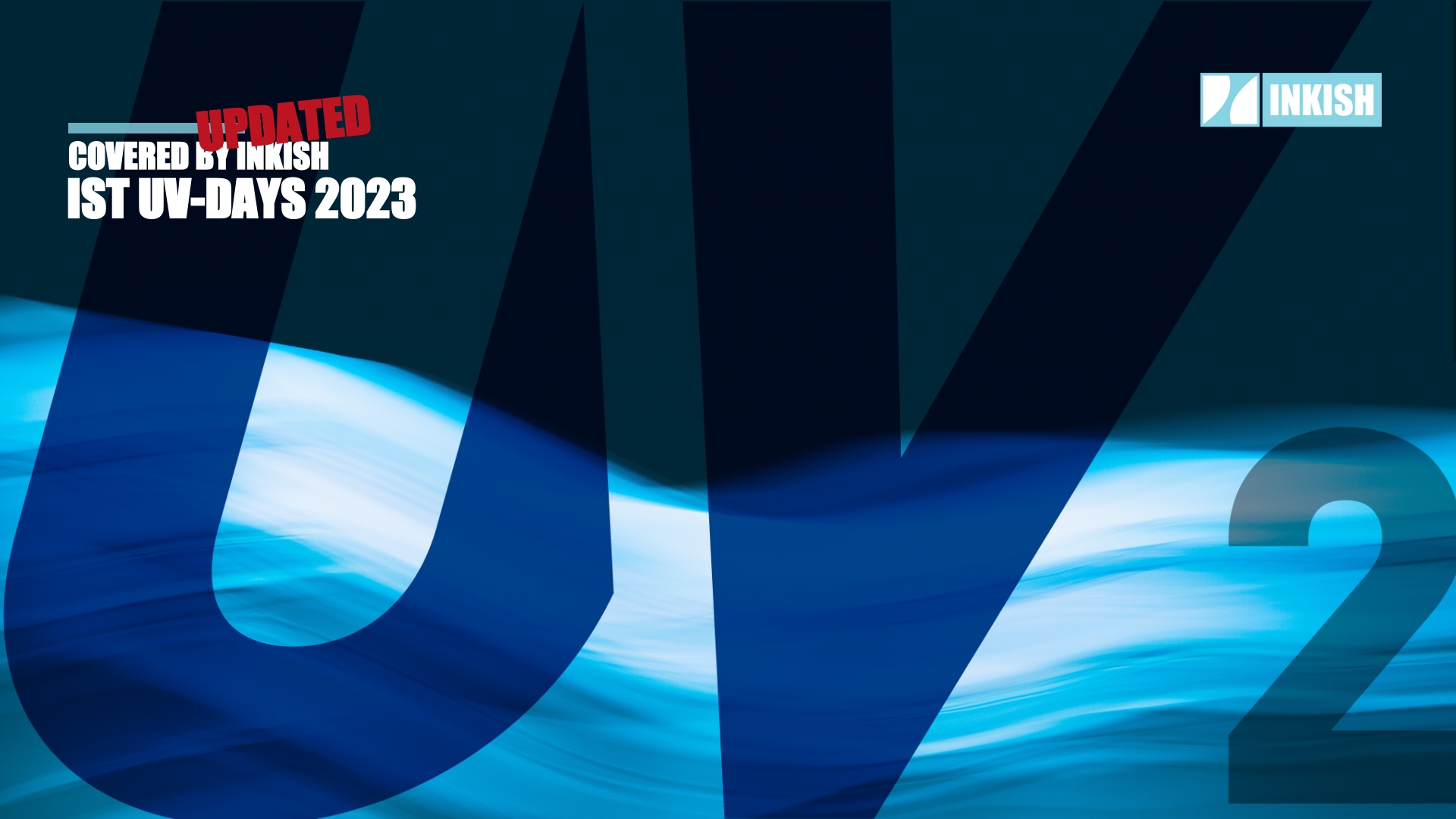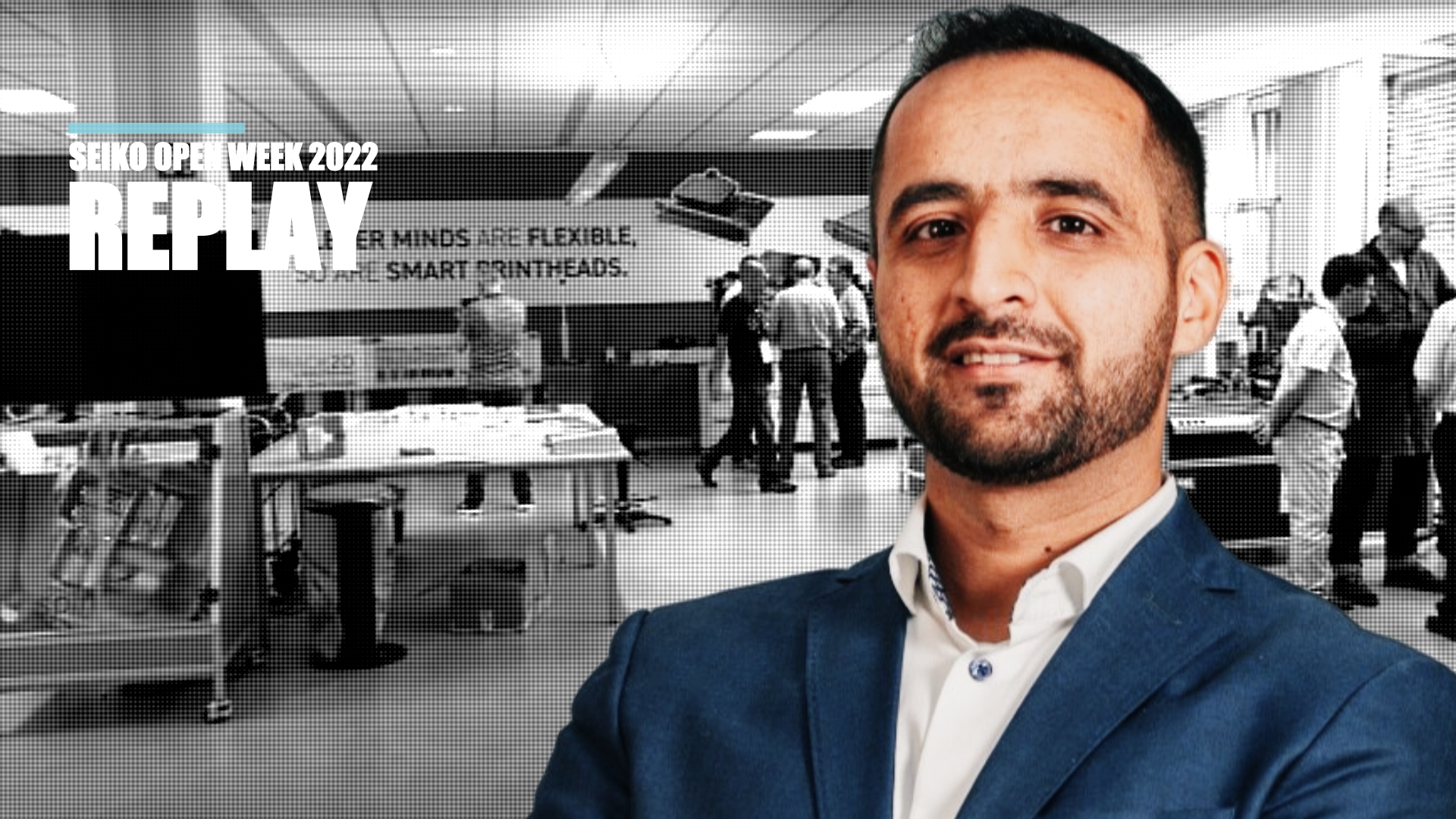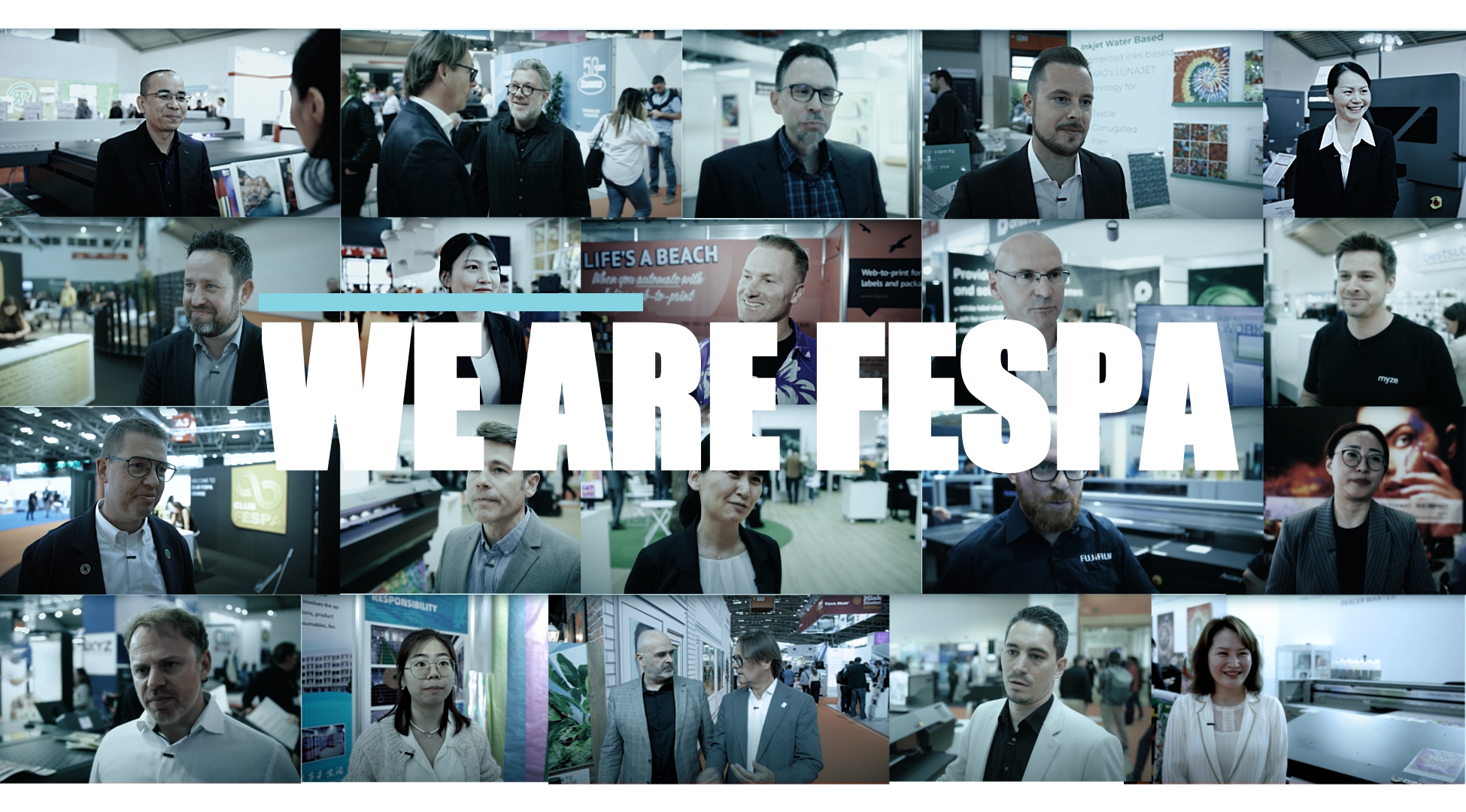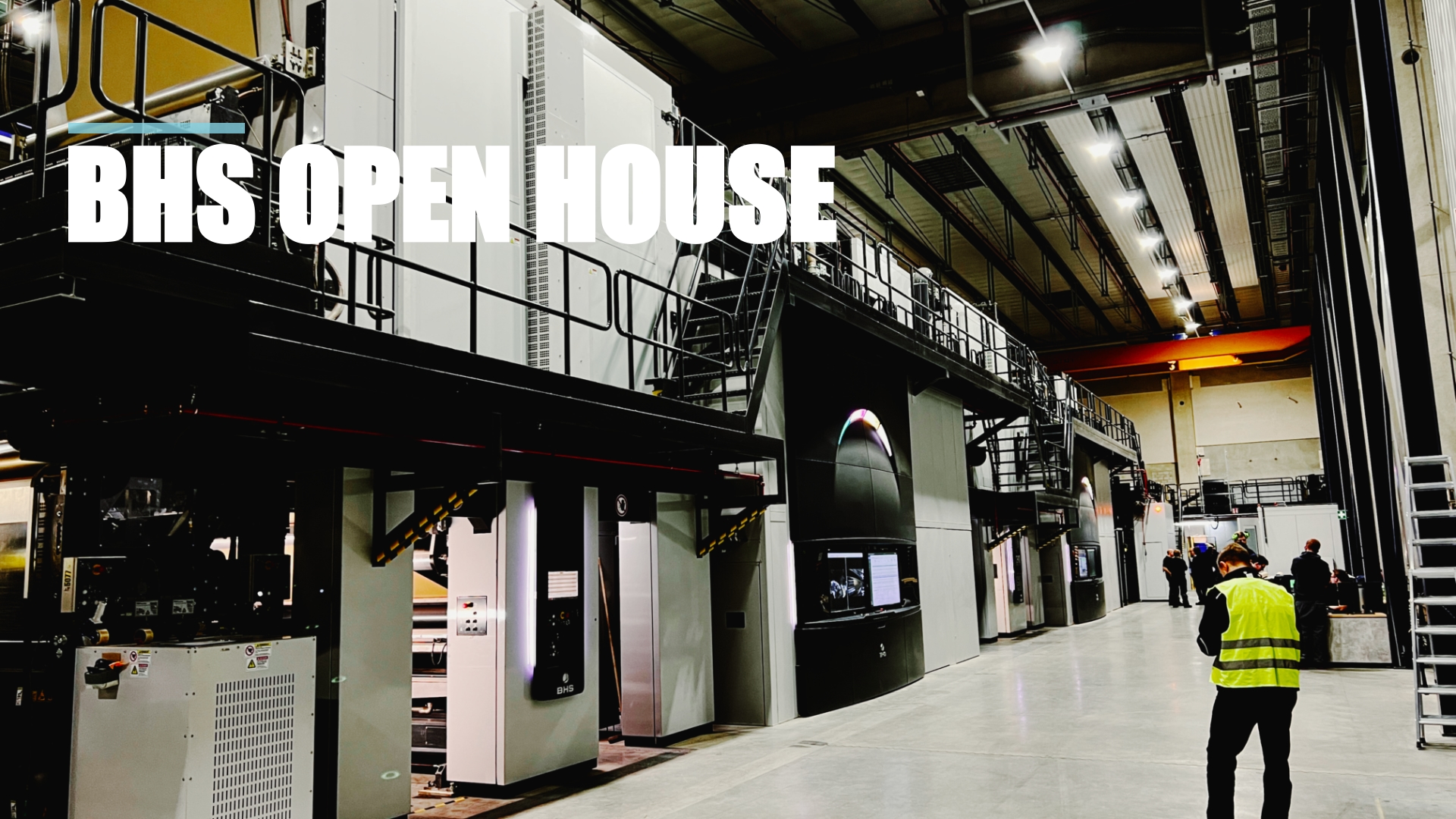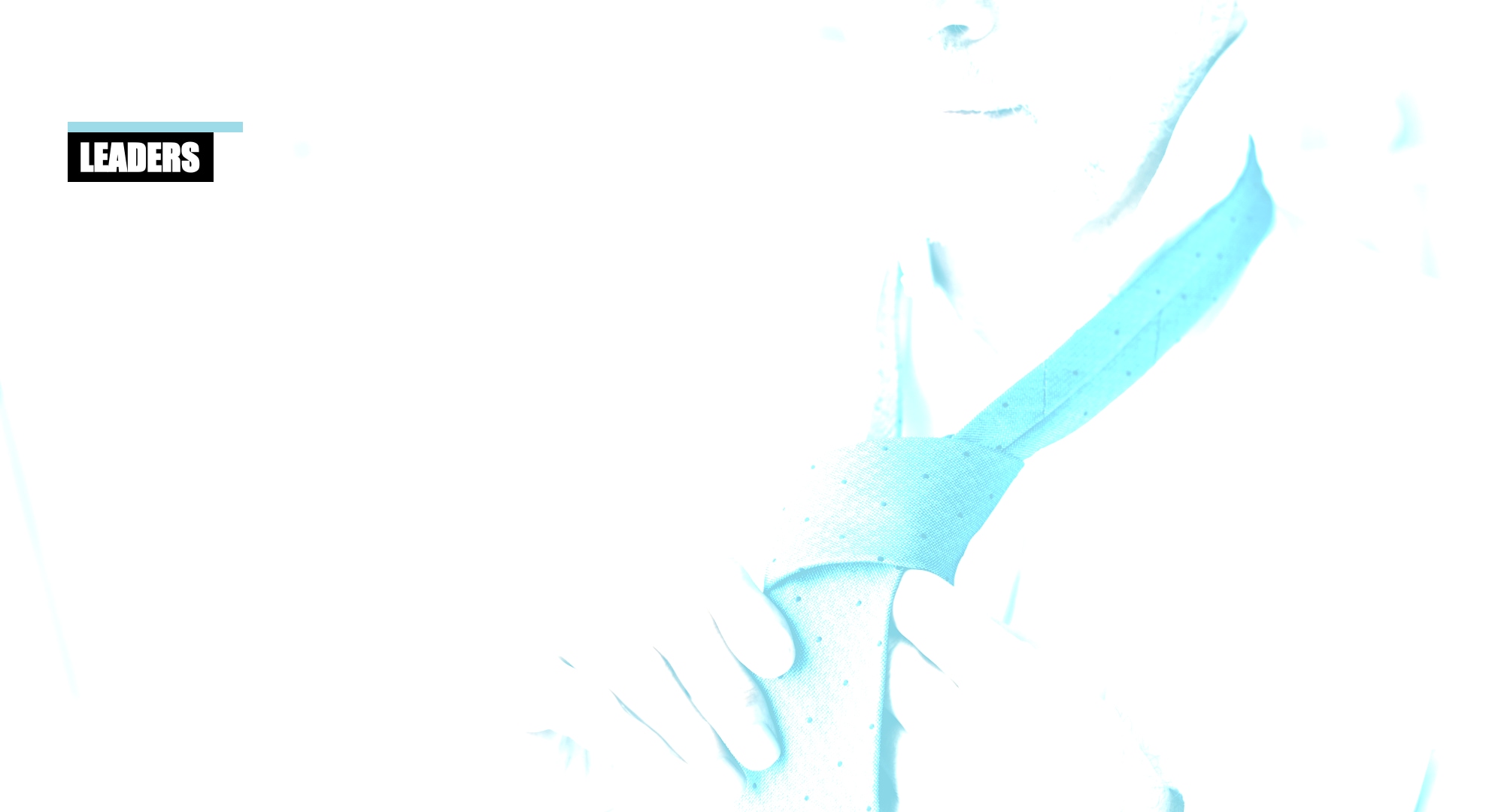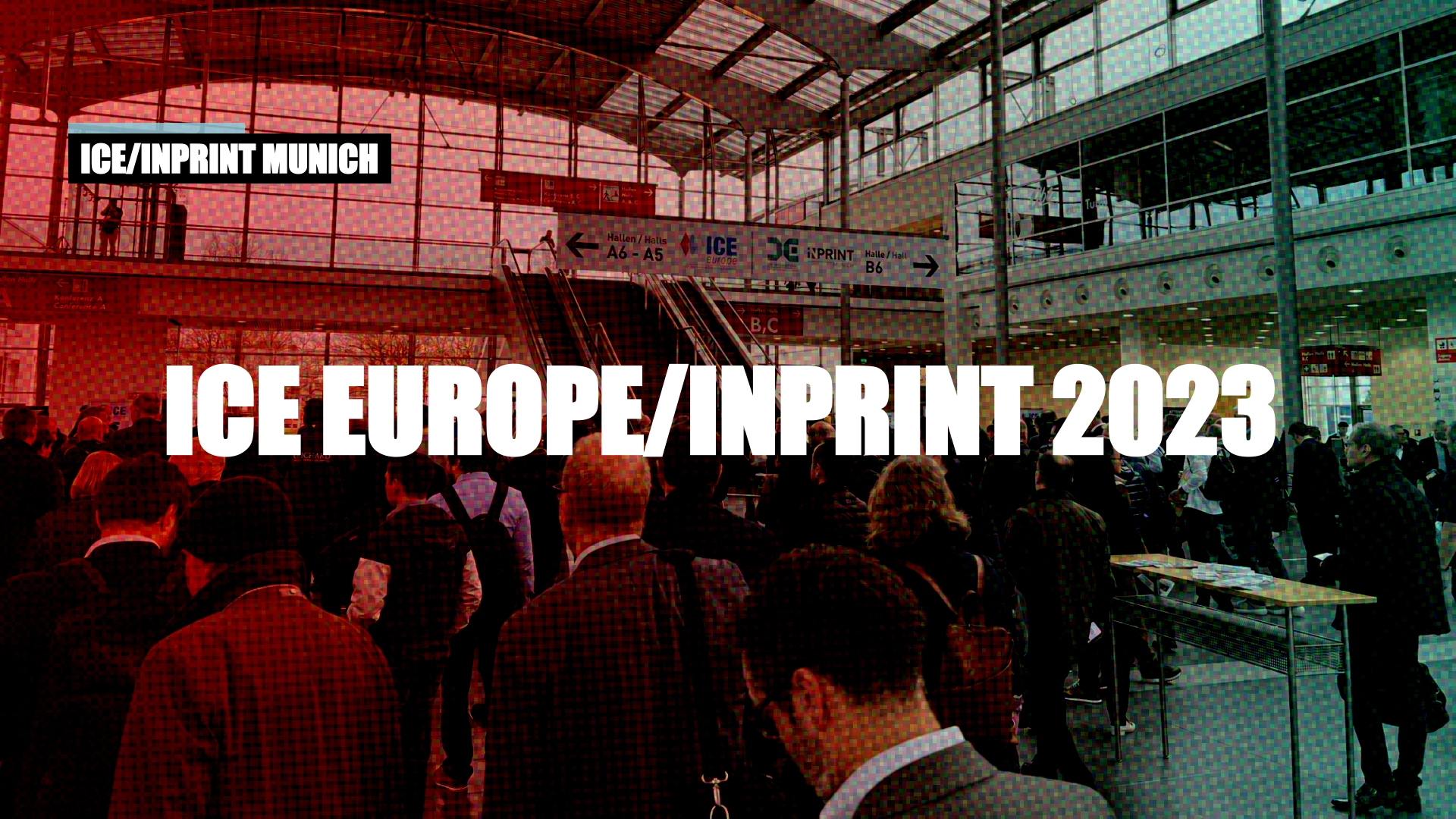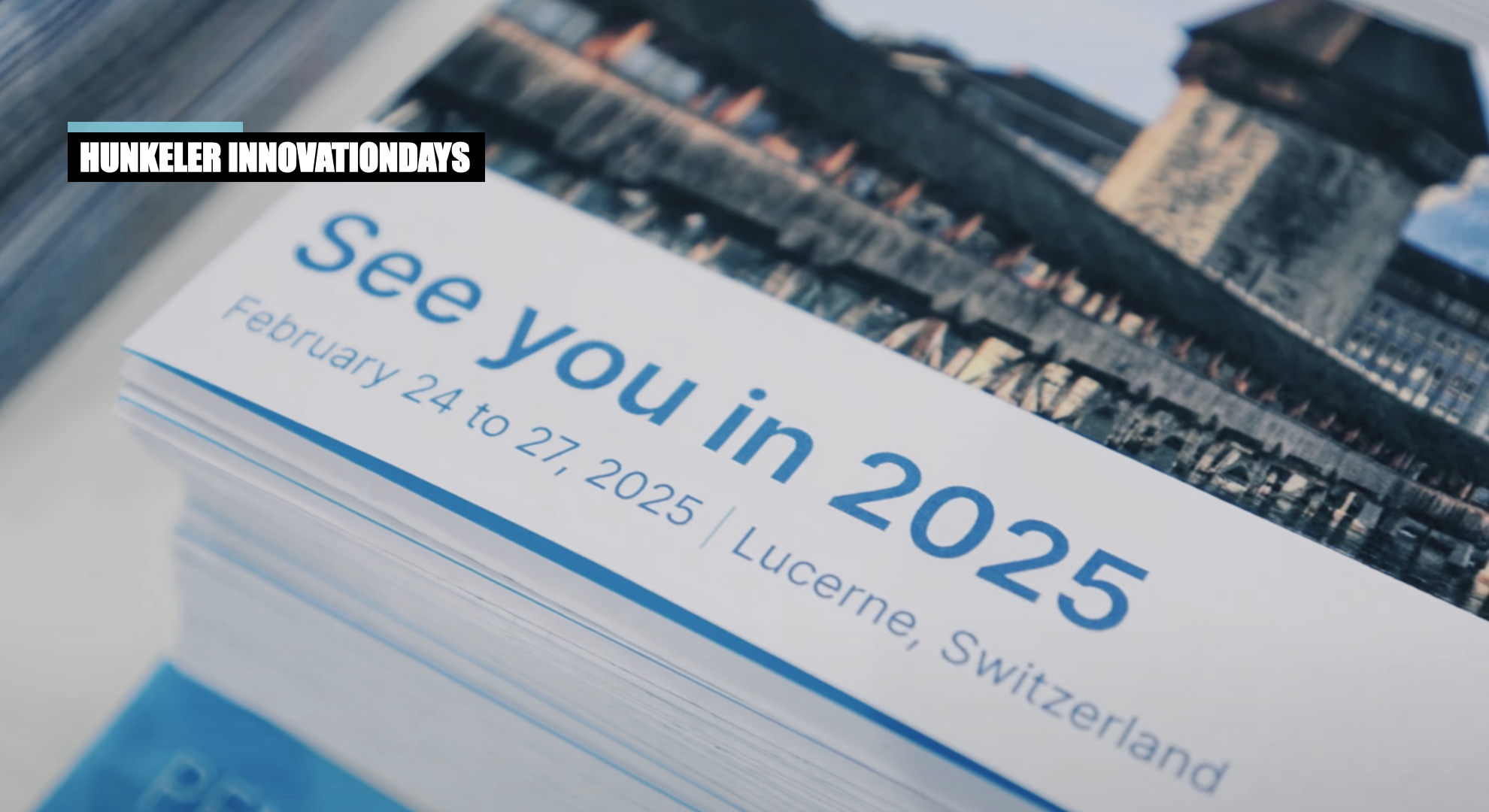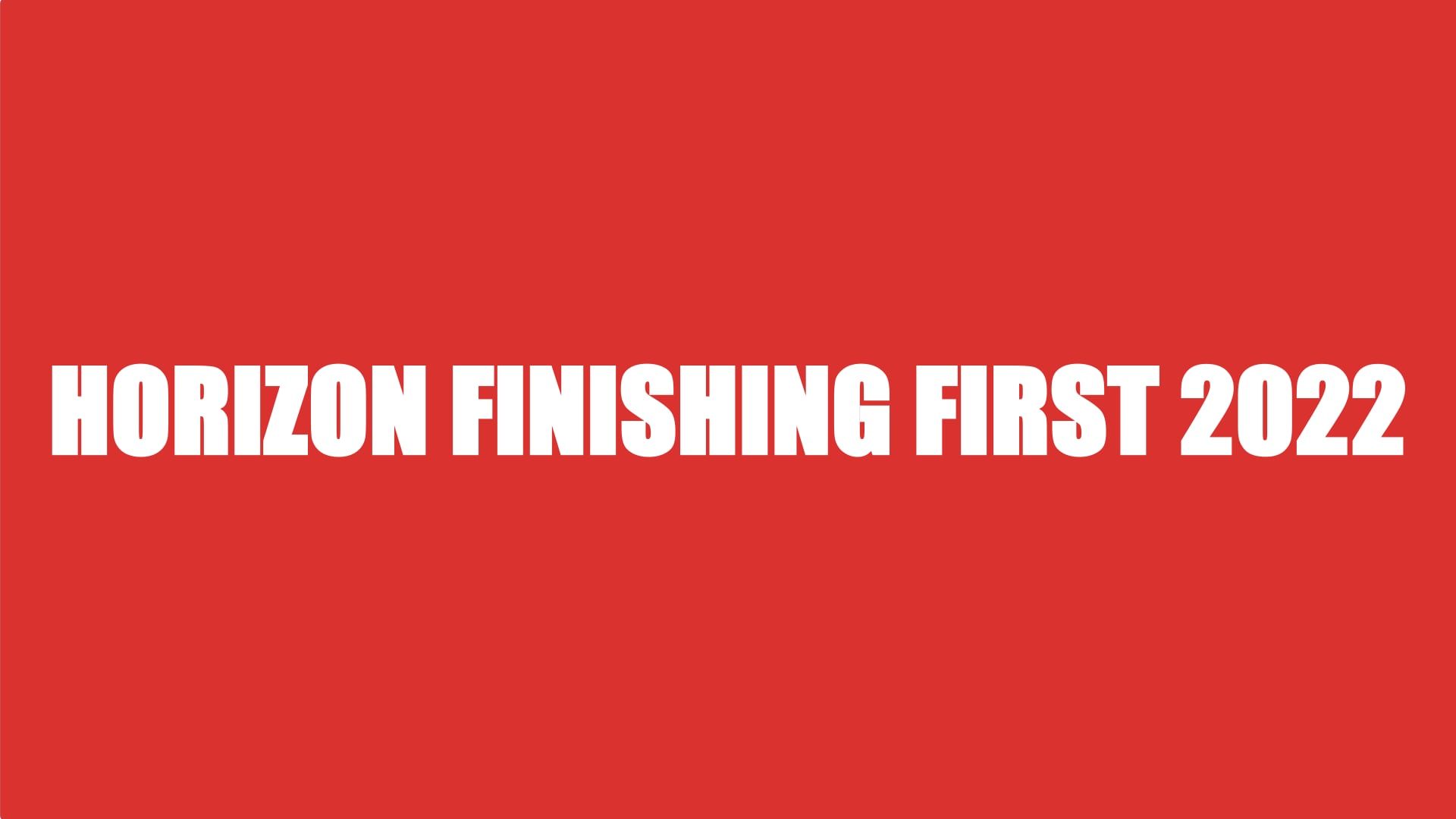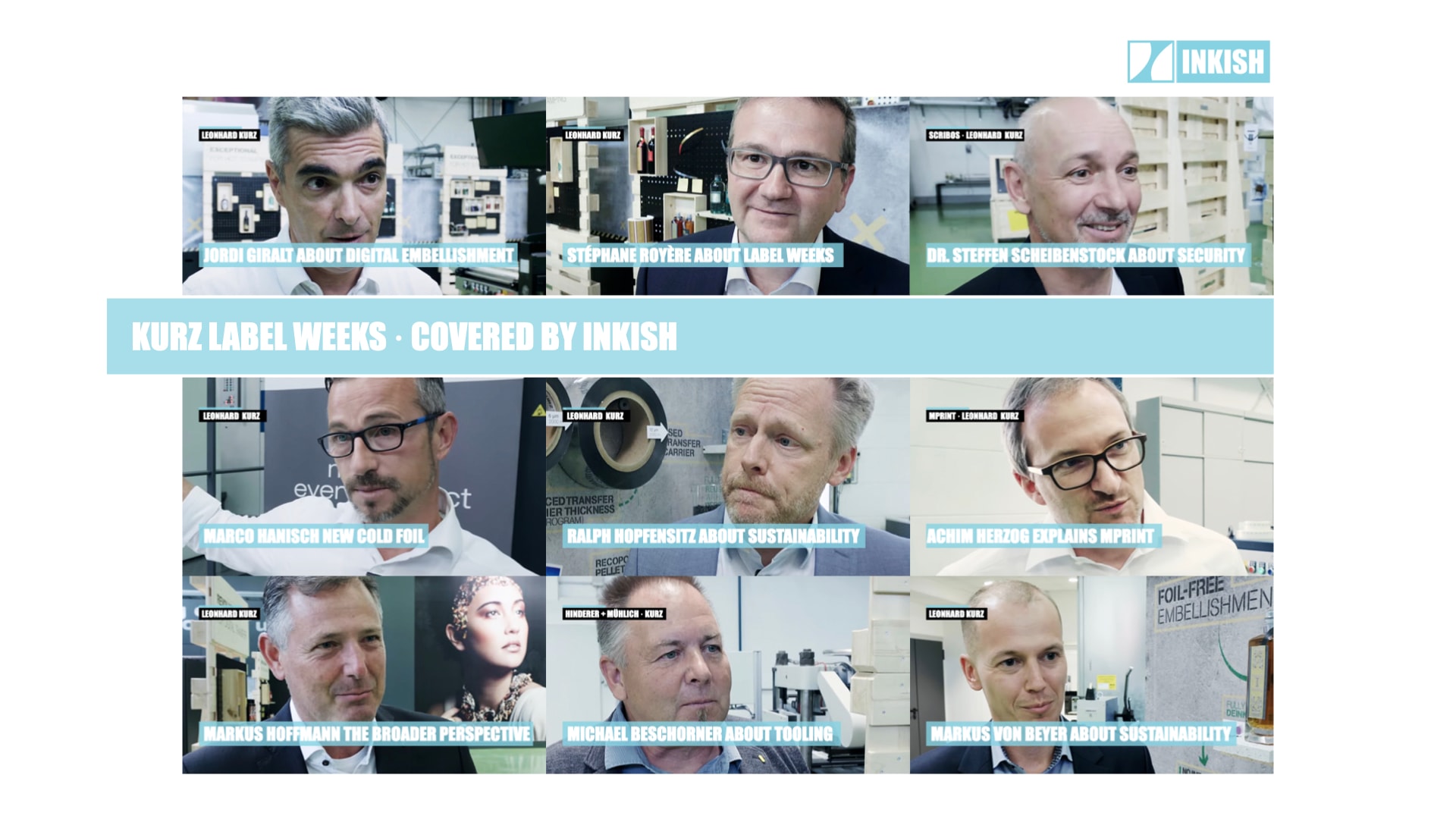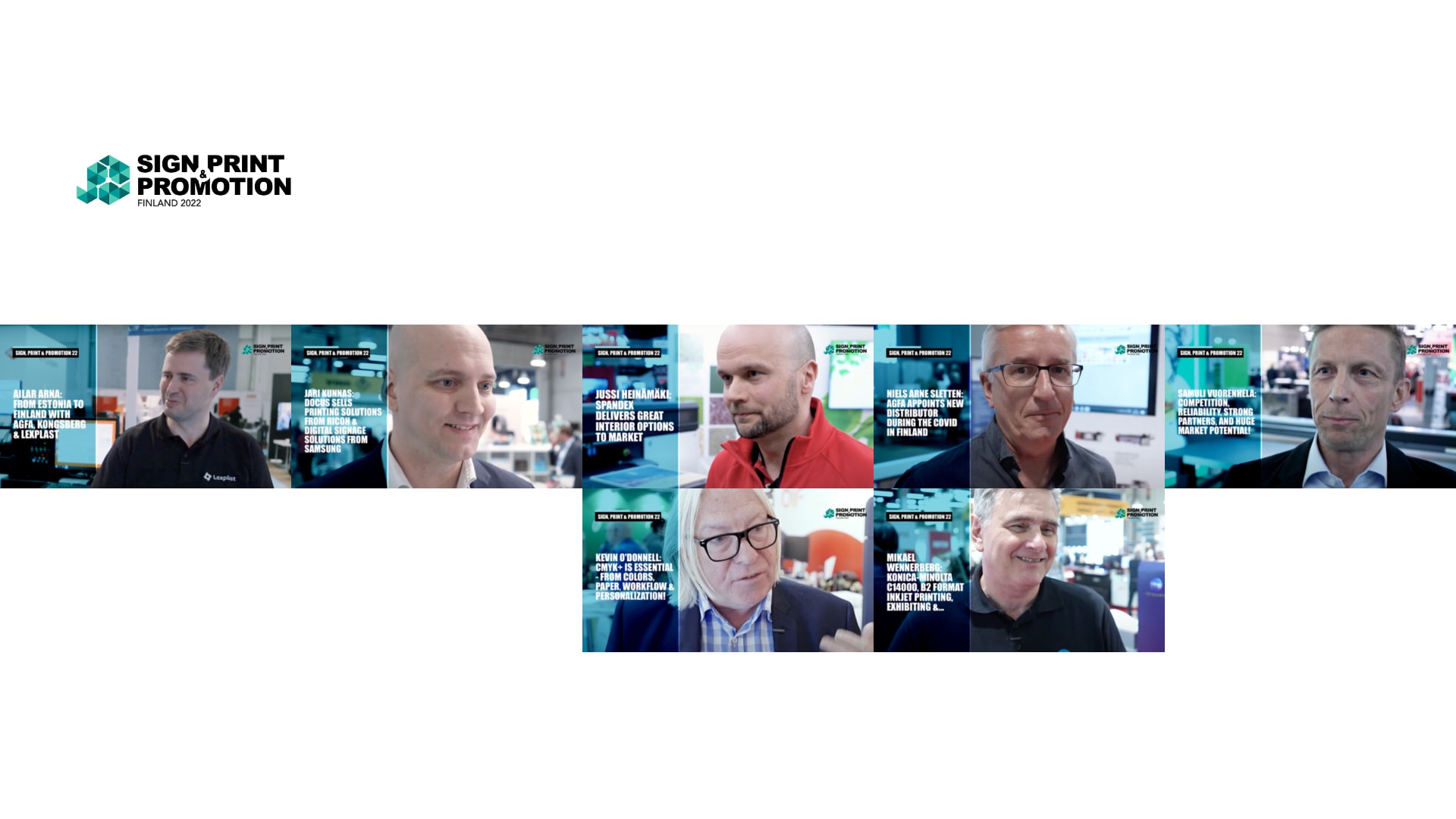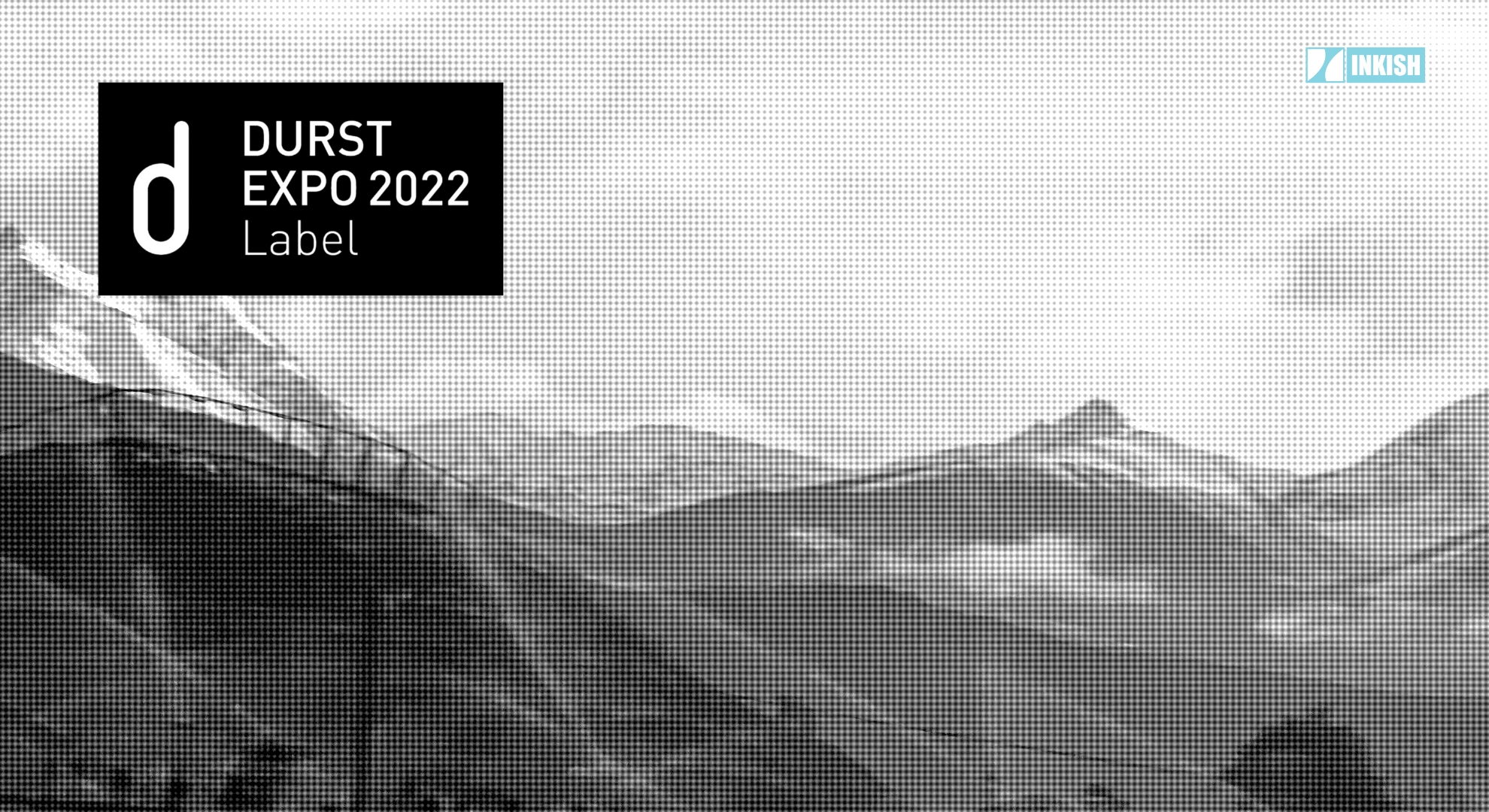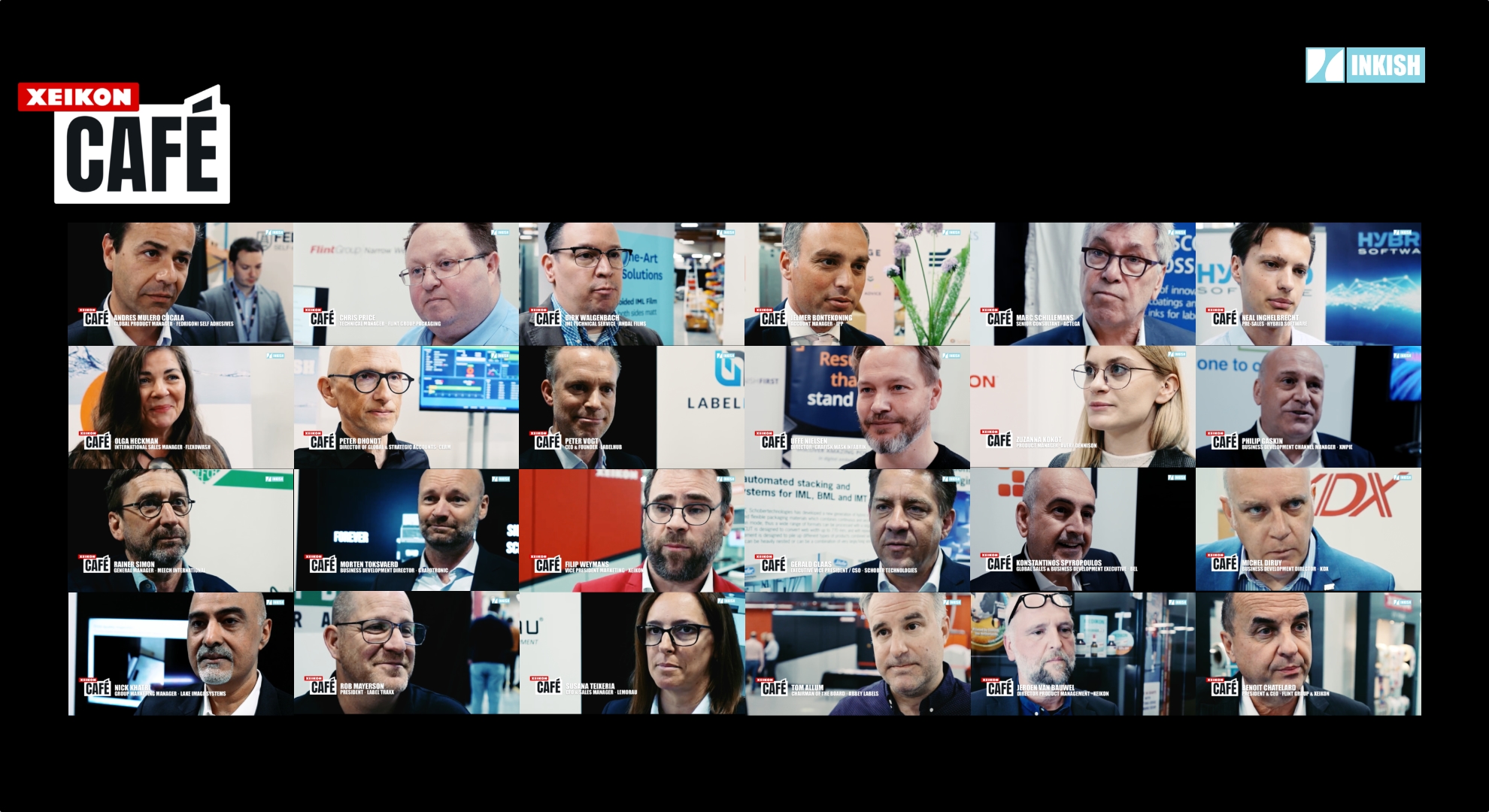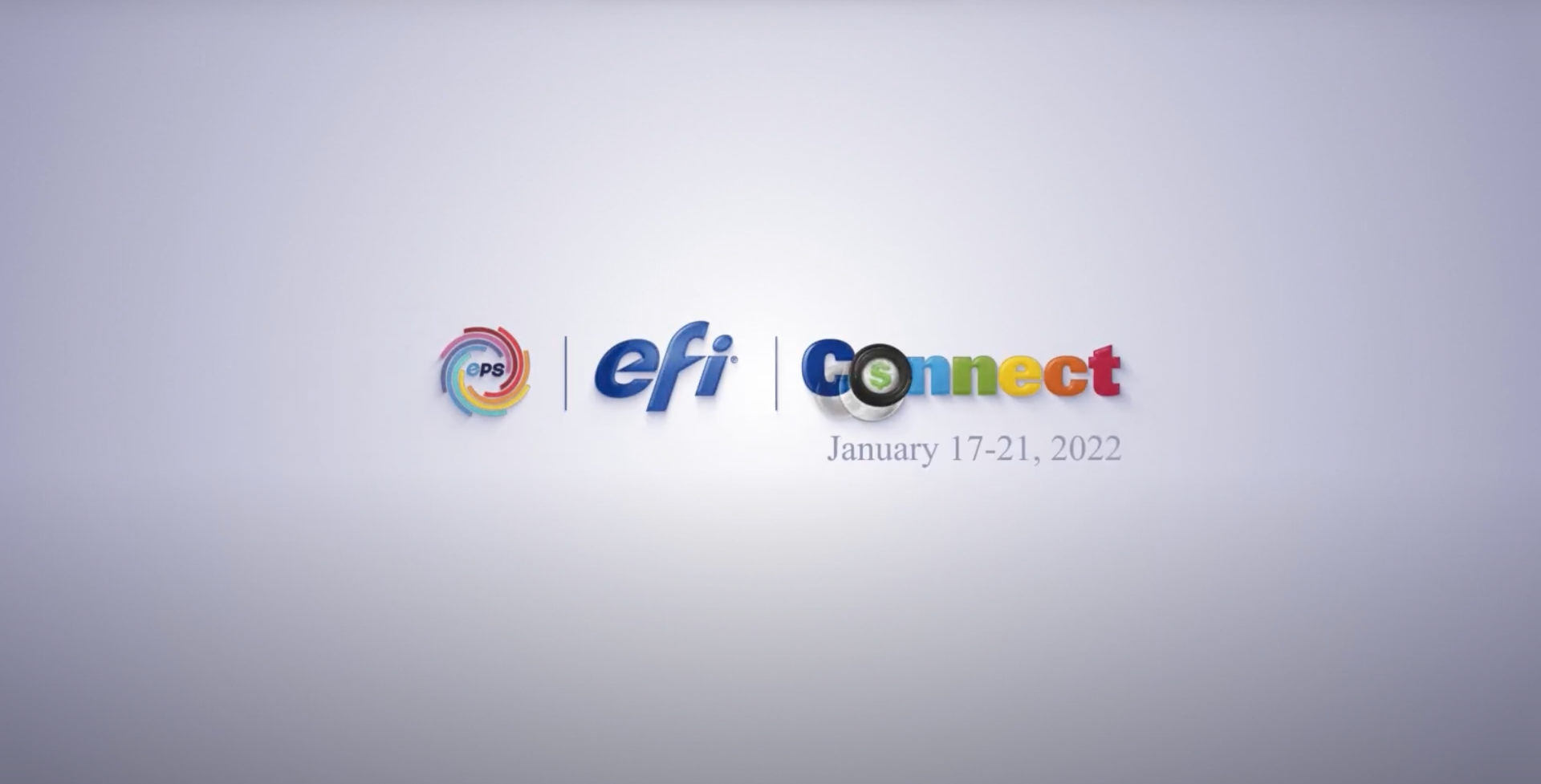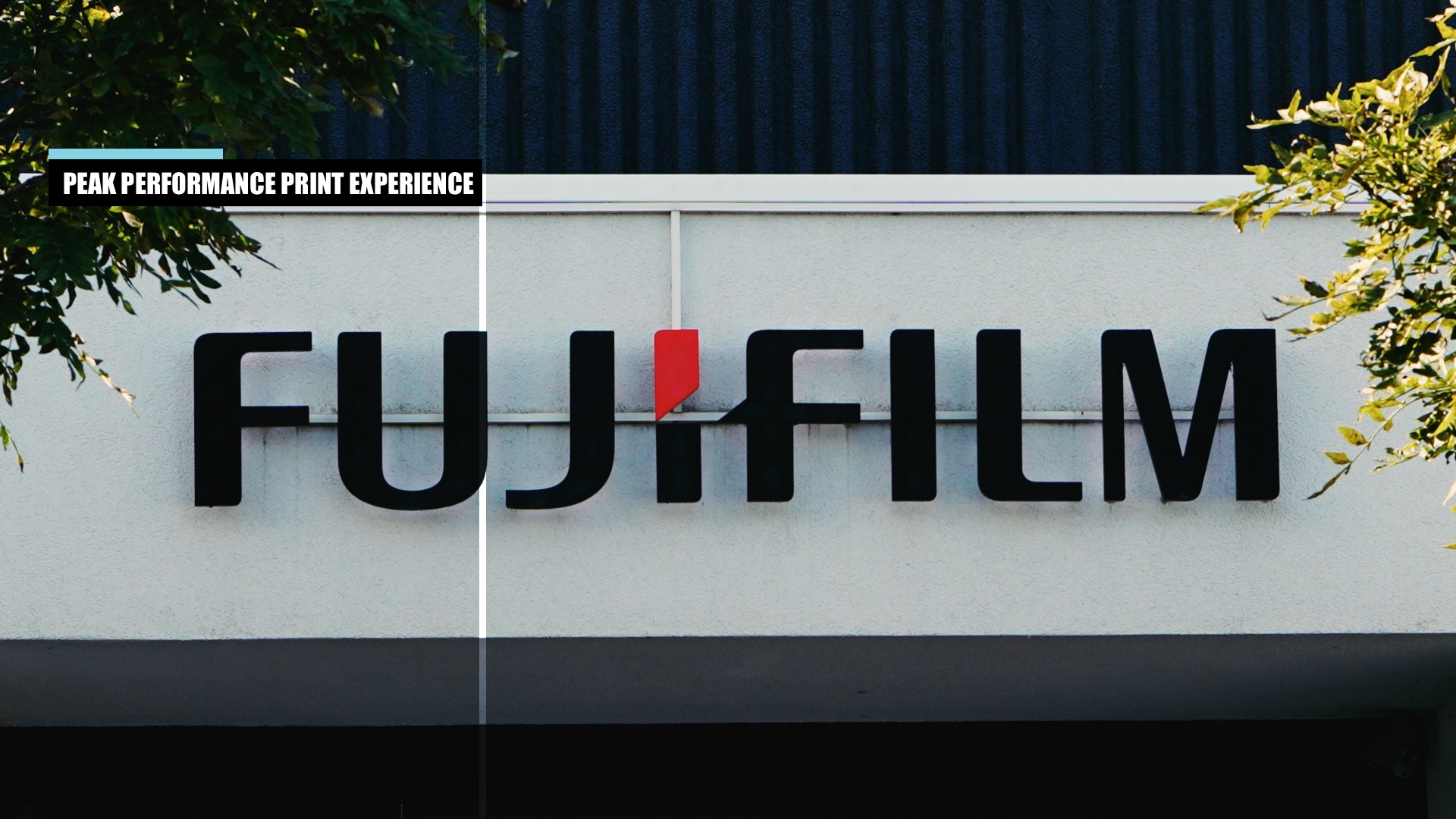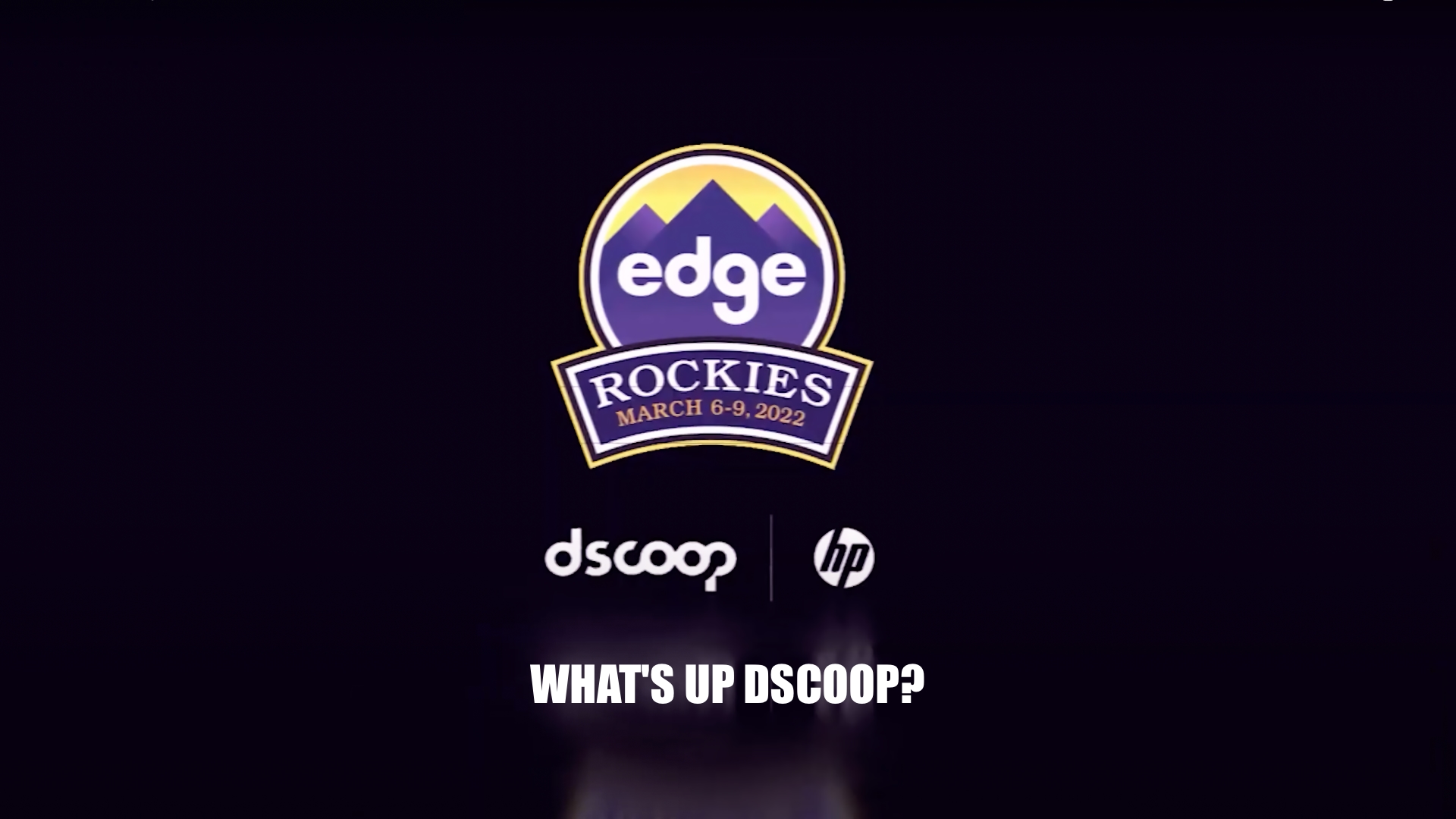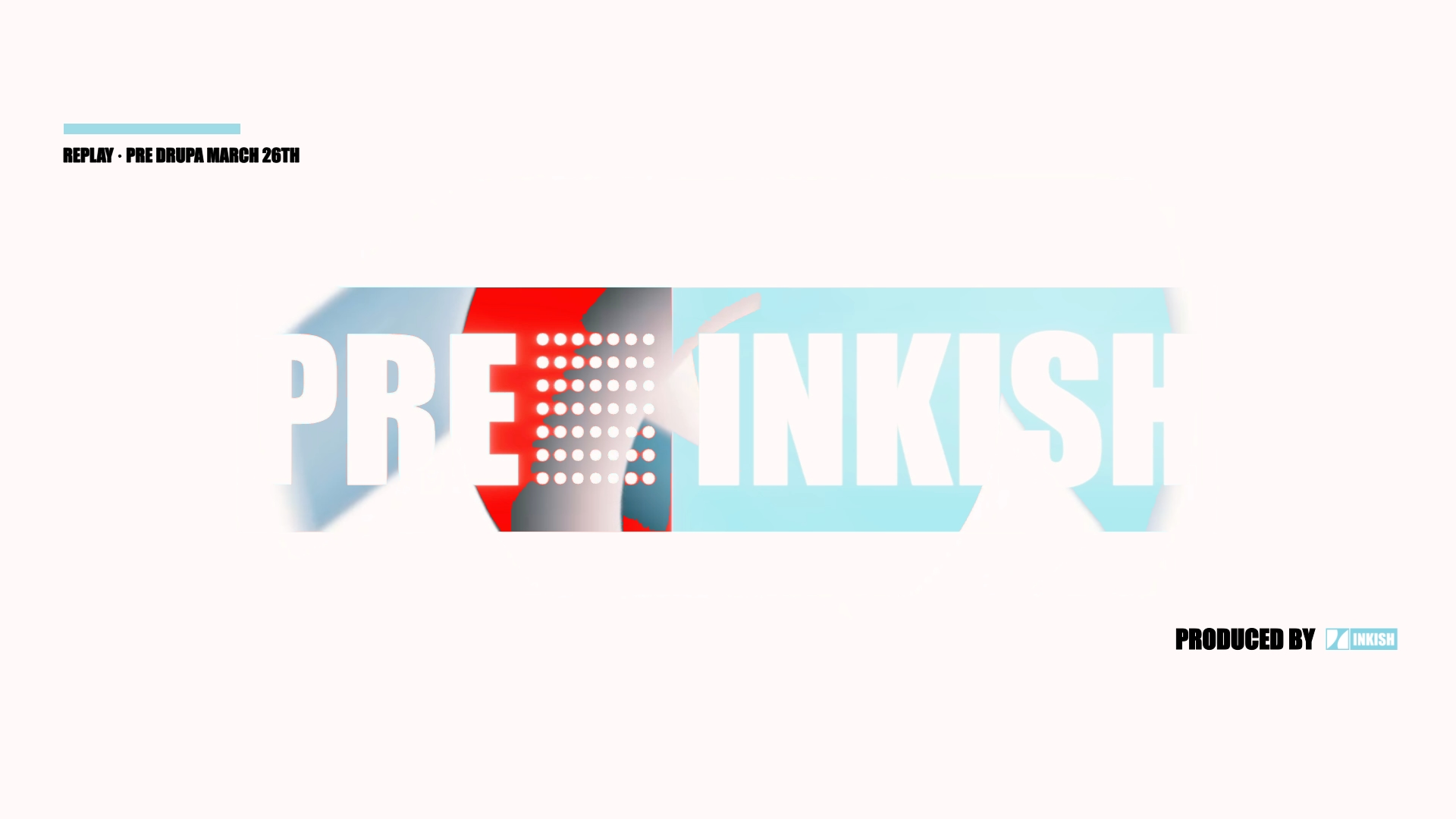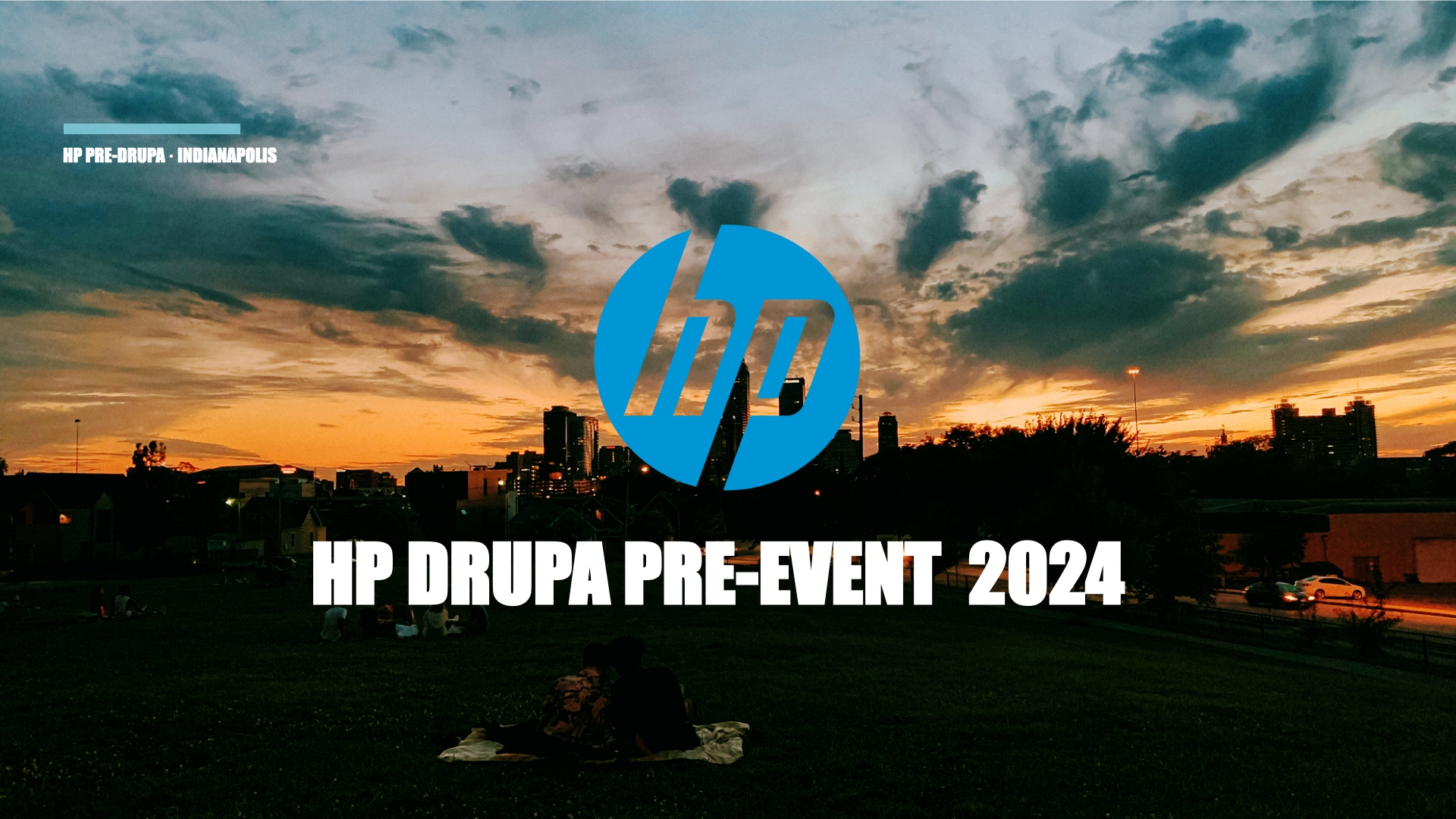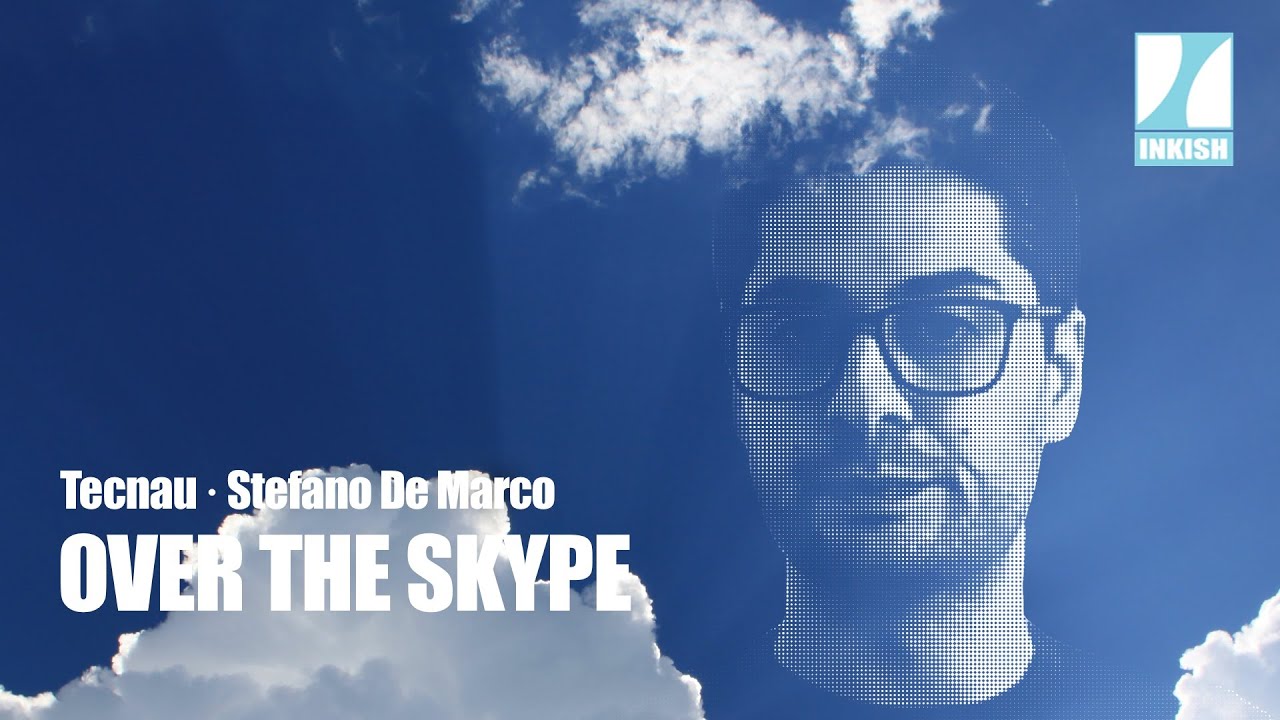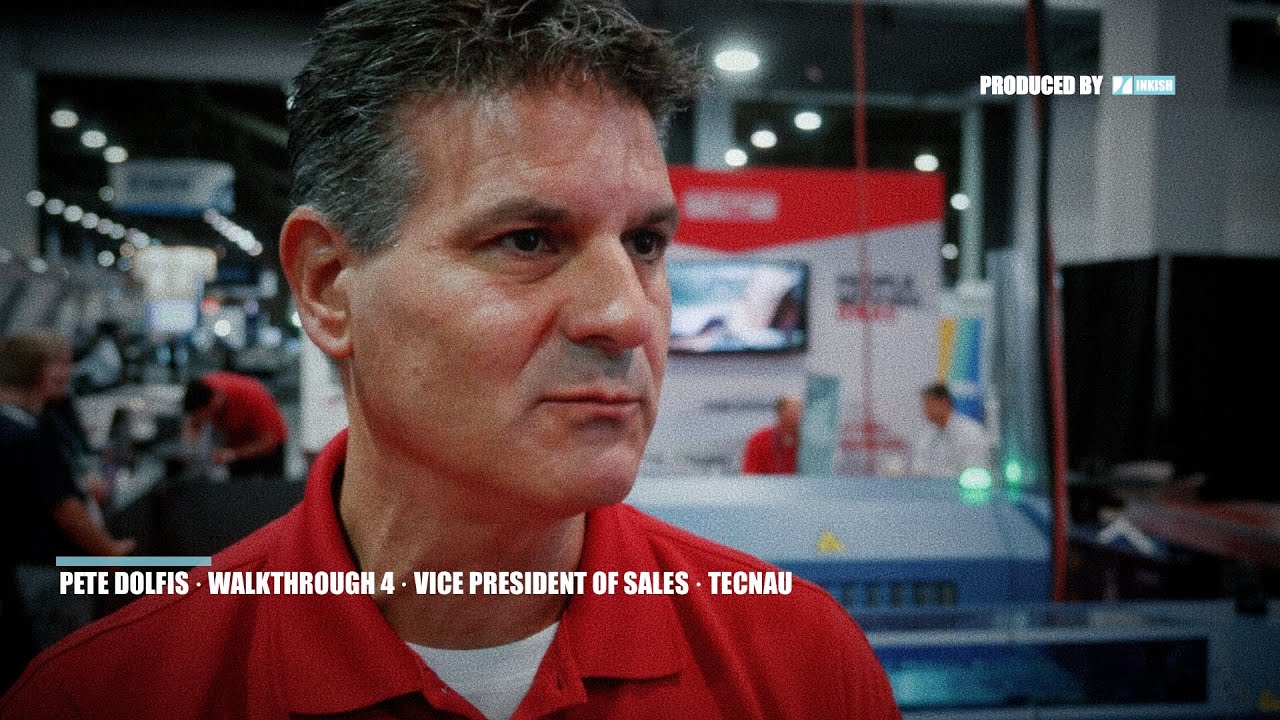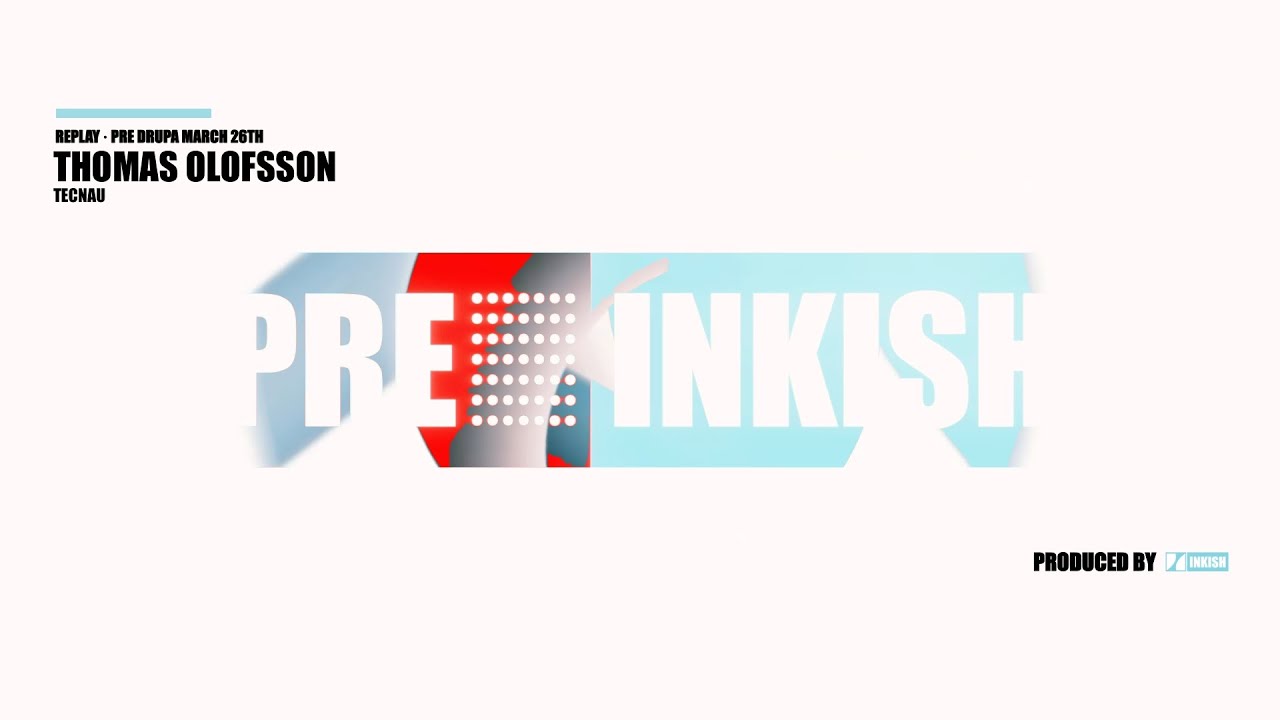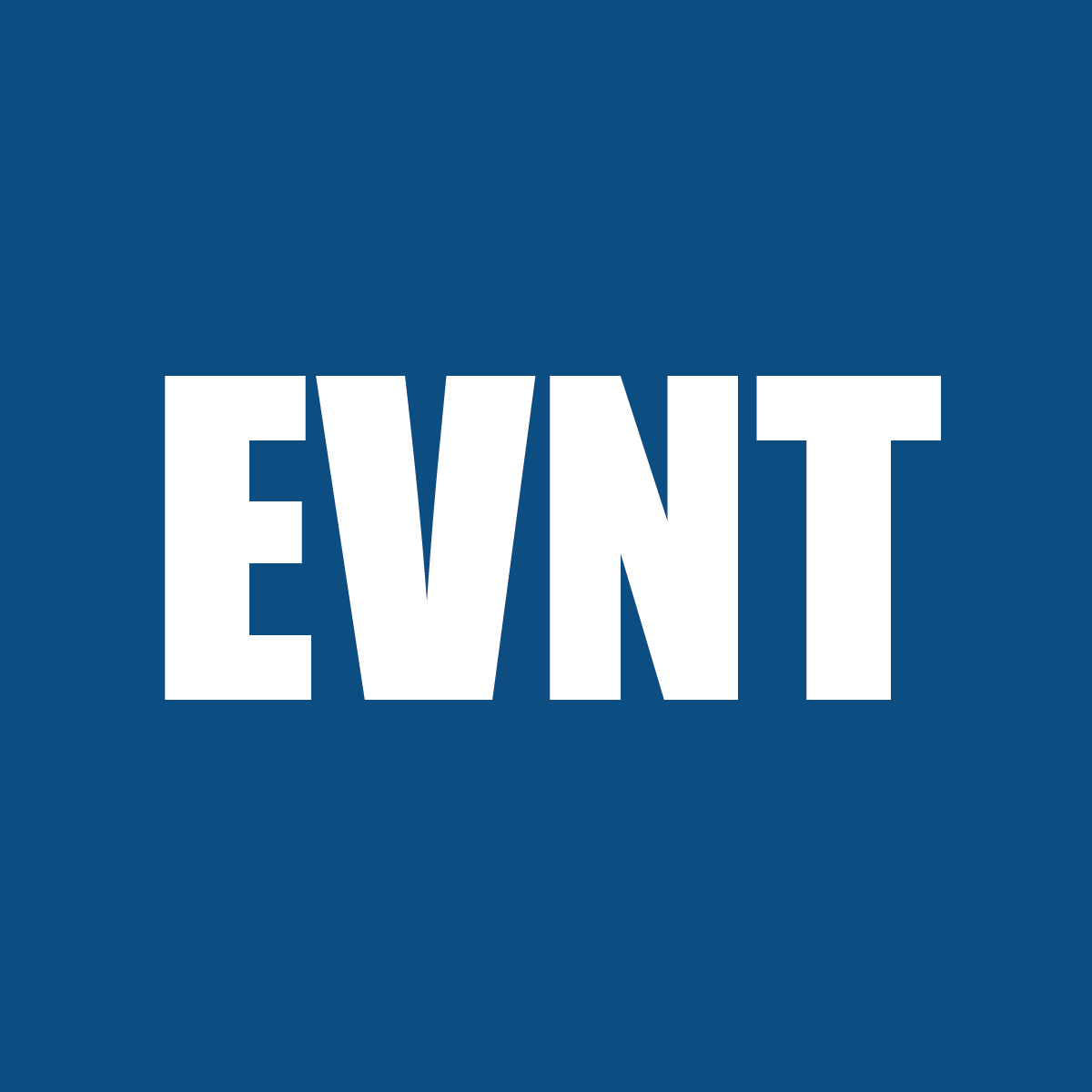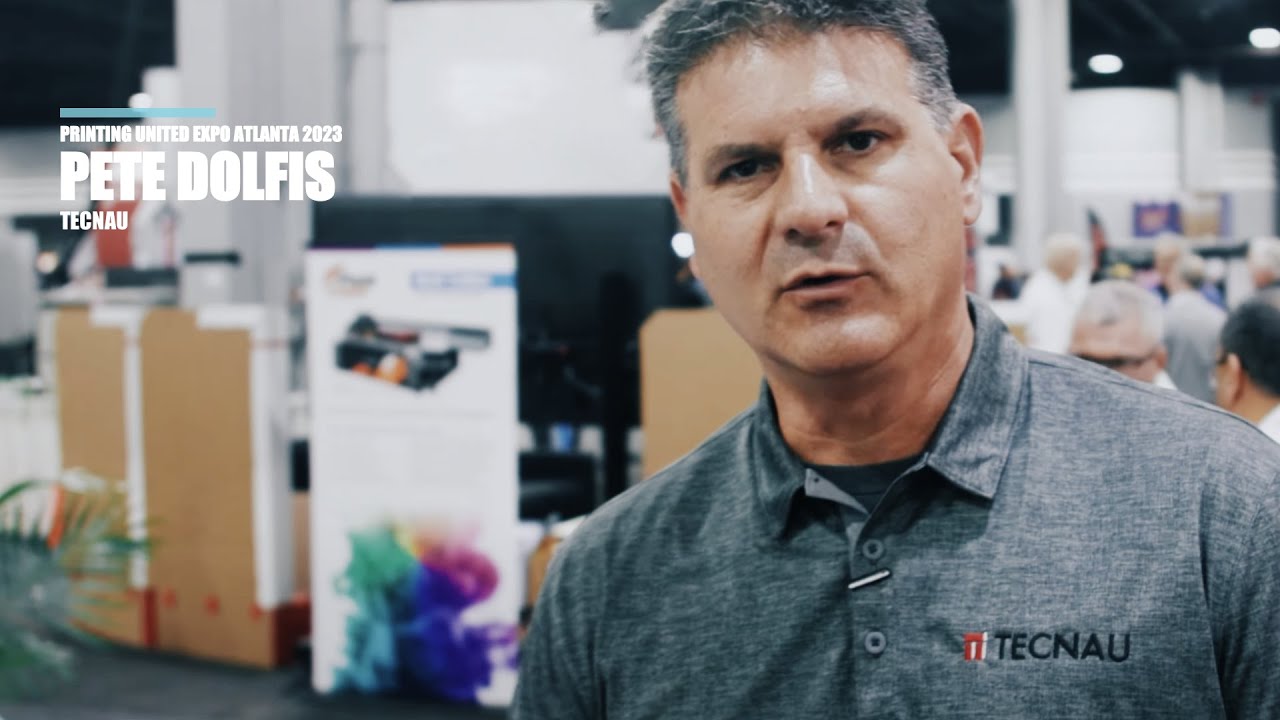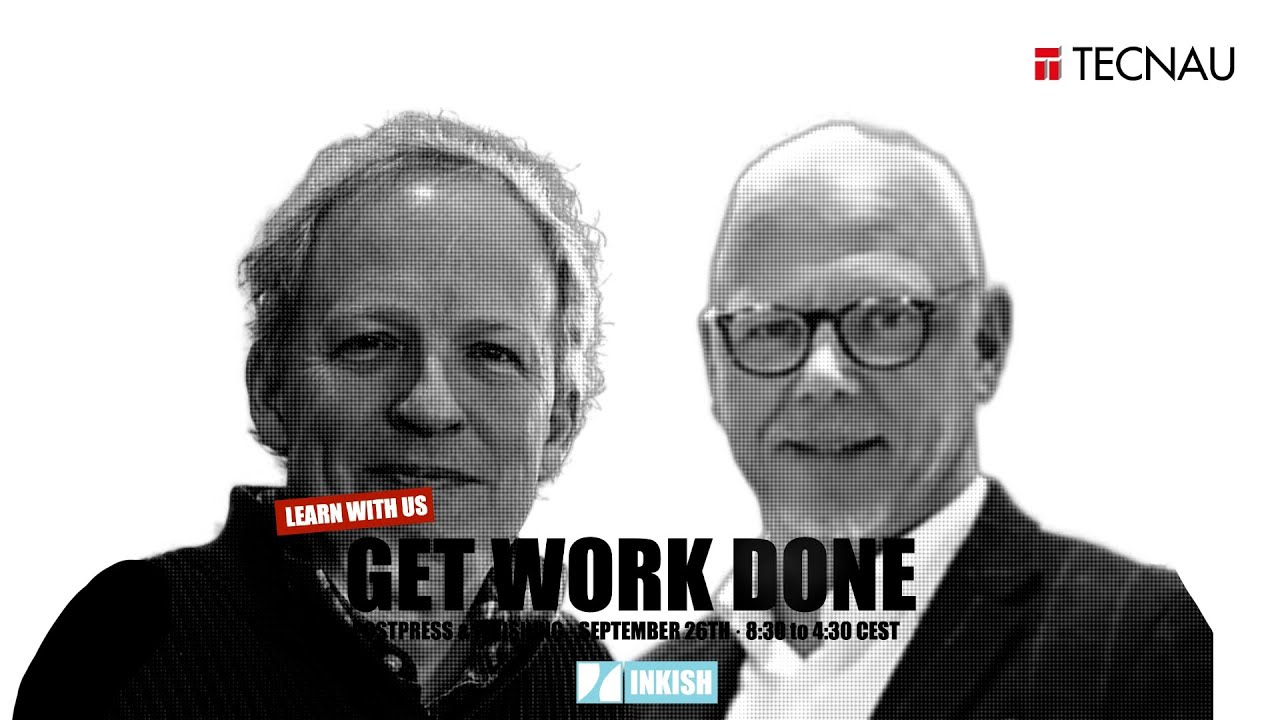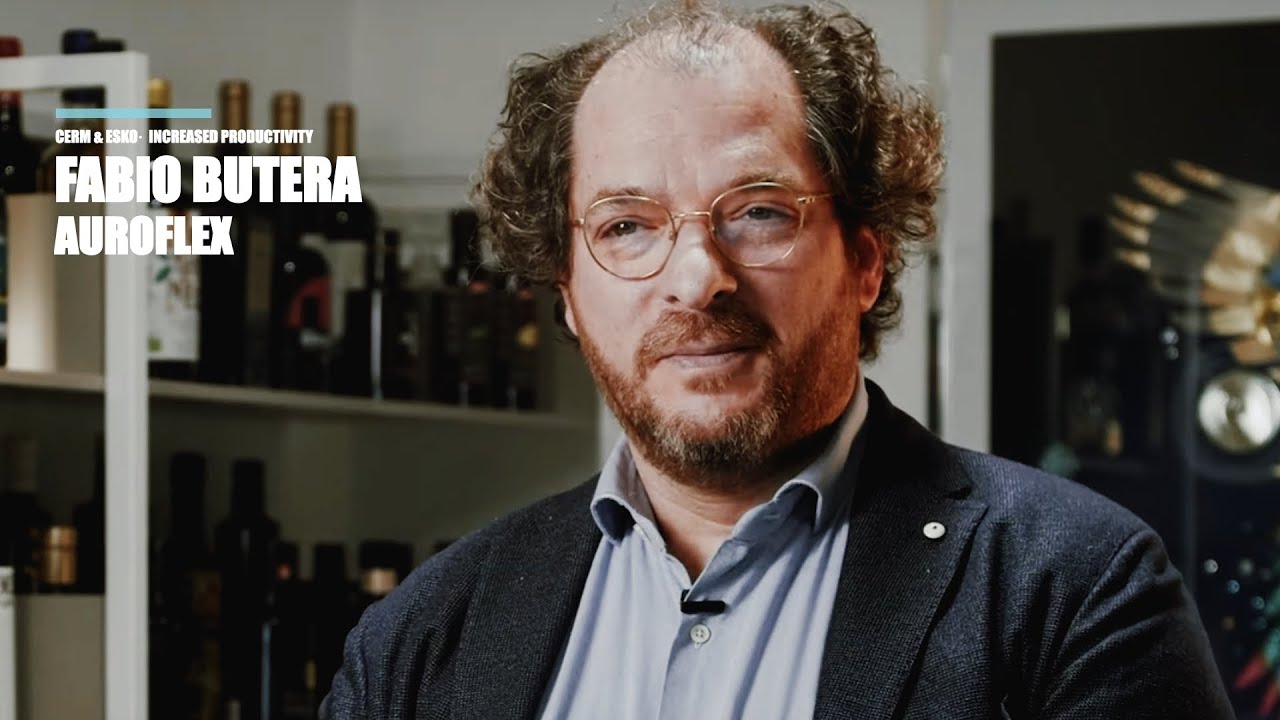Stefano De Marco · Over The Skype · Tecnau Group
Stefano De Marco recently became the new General Manager for Tecnau taking over from his father. Congratulations to him and Tecnau. In this ‘Over the Skype’, we talk about market opportunities, competitive situation, and of course also the new Revolution50 platform. One of the things I liked about the session is the discussion about the changing needs when high-volume finishing moves from transactional print to commercial print.
As with all our ‘Over the Skype’ interviews, quality is limited to bandwidth, web-cams, and ability to literally LIVE mix the conversations. However, it works, and with Over the Skype, we will bring you more than 20 exciting people, and angles on the industry as it is right now.
Enjoy!
This is Morten from INKISH.TV and we are here again with a yet another episode of Over The Skype. I have almost fallen in love with this format because first of all I get to talk to so many exciting people, but I also get to get around the world without the jet lags, without the congested airports. And this time we are in Italy, not so far away from Turin. And I’m going to talk to Stefano DeMarco who is working for Tecnau in Italy. Stephano, can you introduce what do you do and what is your business?
Yes. Hi, Morten and hello everybody. Thanks for having me with you. I actually have the opportunity to introduce my new role. I’ve just recently taken over as a managing director for Tecnau. Many people know me for my role in sales and marketing in the EMEA region, which is what they have covered for the last seven, eight years. And being part of a family business, recently my father Giuliano the CEO asked me to take over some more responsibility. So that’s actually happening from the month of April where I’ve taken over the responsibility for the operations on a global level. And we’re actually just informing partners, distributors. I’m going to be more in contact with a lot of people from now on.
That is great news. First of all, congratulations on that. You are the one of the people that really like to take on more responsibility. I wish that somebody would take all my responsibilities.
Yeah. I mean this has been let me say in the pipeline for some time. I had the opportunity to work very close to my father for several years and I hope I’ve learned a lot. At the same time I’m pleased that we have several external managers as well, which support me and which have been with the company for so many years. So there are very deep knowledge. And we are I think a strong management team together and we look forward to new adventures.
Sounds great. But Stephano, I think it’s great to understand that the continuity of Tecnau with you managing the company and with a good board of directors and managers as well is really a good to know. But how is the market for? Because, you’re mainly focusing on a roll based finishing equipment. Isn’t that right?
Yeah, we do want to say a finishing solution for both the roll and cut sheet the for the high end digital printing industry. There have been quite a few of the exciting movement in the last few years. Obviously, I mean, this is a difficult time. 2020 is going to be a challenge and not only let’s say in these days, but we will see some effects across the year, that’s clear. But what I see talking to people is that nobody really wants to stop. So everybody wants to carry on, everybody wants to go back to work. Everybody has projects on the table and wants people working on them as soon as possible. So the production printing has gone through many changes and many new markets are being opened, the graphic arts, the publishing. And we’ve been doing well supporting our partner store.
I think that of course it’s a little bit unfair that you take over the position as managing director in a time where your results are not influenced by your work but influenced by the corona crisis and the changes in the world anyway. But I’m pretty sure that you will have a strong strategy to move forward. Stefano, one of the things that I’m a little bit interested in to understand is, if there wasn’t a corona crisis and if a time was like more normal, how is the market for high end finishing from your perspective?
Well, if we look at 2019 for instance, that was more a normal year with our, let’s say big trade shows or like the Drupa which was planned without external crisis, 2019 has been a very good year for us and for the market in general, I will say. The number of the inkjet printers has going up, especially in the United States and in Asia Pacific. In some areas in Europe, we did see some level of saturation, especially in the traditional segment of the transactional for instance in art mail. But the publishing segment for has been doing very well and the commercial brain does finally open up. There have been a lot of new technologies put in the market and I think customers have decided to take advantage of those.
I was wondering because as you mentioned, the transactional market is slightly decreasing in Europe. Do you think that is due to change in needs of communication via direct mail saying like that or is it more also because the postal rates in Europe has increased a lot over the past years?
From my perspective is primarily related to separation from a technological perspective in the sense that a lot of the change from thermal to inkjet is already [inaudible 00:05:37] in most of the countries. So let’s say the customer has today already the right technology, running in an efficient way. We start to see now maybe a first a replacement trends for those customers who were early adopters. But the cycle, these kinds of investment is maybe five to seven years. So those who invested the three, four years ago, they are still in good shape.
So, does that mean that when you look at your R&D and the products that you bring to market, is that like, of course you have to supply the demand also for the replacing current equipment. But does it also mean that you mentioned the growing and increase in inkjet for, for example, commercial printers, does that mean that you change also a little bit focus on maybe more other types of binding equipment that fits with that change in demand? Or how do you see that?
Yeah, absolutely. This is something that started to occur already several years ago. But today definitely the most of attention from R&D is in publishing and commercial print. We introduced about a year ago a new platform, the Revolution 50 which is really a number of modules, cutting and stacking and different candles stacking, a buffer and a StreamFolder which we are adjusted releasing actually. And this is really for the heavy duty 24/7 commercial printer customers.
Obviously when we talk about cut and stack, I mean you can use it across the borders, right? You use it in the transactional segment as well. And that’s also where we have actually very good [inaudible 00:07:27]. Typically, when we deploy a new platform, especially for cutting is stacking, that’s across the segments. So for the transaction maybe they would take advantage of the higher speed, while maybe the commercial printer would take advantage of the media flexibility, but it actually addressed both.
Yeah. One of the things that I’m a little bit curious about because I have always, when I’ve been at some of the shows, especially the last time I saw you guys was at Things About Factory in Kyoto. And every time I see both you and [inaudible 00:08:06] and I see also some of the big inkjet machines, I think that the modular approach you have and the way that you can interface cross [inaudible 00:08:16] is a strength of course for the consumer and for the customer. But isn’t that also like giving you a headache in the sense that let’s say that you have the best stacker but not the best cutter, then I guess that you can combine different brands into one workflow. Can’t you?
Right. Obviously finishing is a very complex segment. And I think there’s the reason why then the reason really very few player in the segment. Because it really requires knowledge and expertise in different fields, but also it requires to be able to adapt and cooperate with several printer partners which have different technologies, different needs, different interface. And the same with the finishing.
But that’s where I believe as a company we have tried to focus and where we have come up with a good job is to see finishing as an enabler. So customers today cannot look at processes on a standalone base. They cannot look at the printing and finishing workflow, but it really requires everything to be connected and tightened together. And what we’ve tried to do, delivering innovative solution to the market is to have the finishing being an enabler for the capabilities of the digital printing.
So make new application possible because you can… well, theoretically, let me say, simplify print anything. And the question is what do you do once you have that role? Or what do you do once you have A3 or a B2 sheet, how do you transform that in an efficient way into a finished product? So that’s where we try to help.
Yeah. But that also means that, I mean just to understand the value chain and your value proposition, is basically that the combination of end to end solutions that you offer combined with a high level of knowledge about both the products and also the print engines ahead of the equipment. Is that where you think that you have a strength in the market? Because I mean with this inter-operational abilities that we just spoke about, I think that you must, I’m not trying to have a leading question, but I’m trying to be like open curious about what is it that Techno offers that makes customers choose you as a supplier?
Well, as I mentioned, I think we tried to look at processes in a different way. I’ll give you an example. In a way, to be innovative in the graphic arts industry is difficult because I mean-
We ended up with a book, right?
Yeah, exactly. The processes are standard. A cutter is a cutter of StreamFolder is a StreamFolder, but here I’m of course oversimplifying. It’s not the process itself is the way you handle that. So about a seven, eight years ago, we introduce zero speed splicer into the market. Very common-
What is that?
That’s basically a solution which allows to change automatically a role.
Oh, okay. Like you see on the web offset machines basically. Right?
Exactly. That’s a very common process in offset. Absolutely, almost on existing until let’s say seven, eight years ago in the digital, excluding let’s say maybe those are really high speed presses, 40 inch, 30 inch, which we’re using actually offset solution. So when we introduce that, then we said we want to put the Tecnau vision into these. So traditional splicer have one roller on the top and one roller on the bottom. That’s how all splicers are designed.
We decided to use two parallel on winders. So take two standard winders you’ll double it and then you put the splicing tower in between. So why did we do that? Because we want customers to be able to run one roll and then before ending that, if they want they can swap on the fly to the next roll, which can be different paper type, can be different with and then go back.
Splicers are done traditionally to increase the efficiency. But here we want also to overcome what is the intrinsic limitation of a continuous feed. Which is flexibility or media flexibility because you need to run typically a full roll before changing that. With this solution, you introduced this flexibility. And the same on the backend. What customer typically get blocked by is that they need to run again a full roll before changing the rewinder.
What if they have an urgent job? What if they want to print the same media but you know they want to print a for dark mail, so it would go to a folder and then for a book and go to a StreamFolder. Well then we introduced the same concept on the back plus a patented interface with the printers so that they can change on the fly the paint on a code depending on what how they want to transfer the jobs. And they can create the murals.
That is fantastic because that basically means that by… Of course, I know that everybody who is inventing and producing equipment of course have to look into what the market needs. But what you’re saying here is basically that you also sometimes by your own means investigate how you can make your customers have more flexible solutions. Right?
Exactly. It’s trying to see what are today the bottlenecks. And not all customers are the same. They do similar things but they have different processes, different workflow. So the other thing really try to understand these, what is important for that specific customer and also do customization, do specials for them. And especially in the graphic arts, we see this ends up to be a big plus for a customer, which really want to sort of unique solution tailor made for them.
Yeah, and I think that is what I like about your approach because as you said, when you move from a transactional print to a commercial print, the needs are changing. For example, with the meta diversity as you spoke about, but maybe also the flexibility in short runs and things like that. I guess that is great. Is that something that you believe is unique to your solutions or is it something that you see from competitors as well?
Well, the media flexibility let’s say it’s a demand from the market. And the companies tried to respond in different ways. You can say the Tecnau has been doing a lot of work into this matter and a lot of testing both by ourself and both with printer partners and with the Revolution 50 platform, one thing we see intrinsic to the design is what we call the deterministic approach. So that’s a core value we bring forward for the Revolution 50 which is the ability of running different media, different application with the setups which are known ahead. And this comes with the hard work of testing, which we’re very proud of.
Sounds great. Just for the audience, I am writing a little bit about the stream flow right now and to be dead honest, I have been in commercial print all my life, so to actually understand how complex the finishing of roll-based finishing is, I have actually started quite a few websites because I’m always concerned about grain directions, I’m always concerned about the finished products. But I think that from what I see and what I understand from the Revolution 50 that you’re talking about, seems that you have got into some really great engineering in your products. How difficult is it to, I’m not asking as layman, I am just thinking that you have with the new stream flow you have like 230 meters per minute processing. Right? It must be challenging to get registration, it must be challenging to make sure that everything works just as planned. So how long time does a process take from you get an idea to you have a finished product?
Well, with the Revolution 50 it was a pretty long, I can say. Because before that there was the previous platform, we always went through, let’s say incremental improvement. But the basic technology was pretty much the same. On this technology, and I like to repeat a statement that came actually from one of our good printer partners after he saw it. He said, “You know, Stefano, the only thing you kept here is a color.” So we really changed everything. We changed the hardware, we changed the electronics, we changed the software, we changed the cutting technology.
So it was a very long process, a long design phase and a long testing phase. But we believe this was truly needed. Because the digital until a few years ago, sort of lived let me say in a separate word. So digital printers, the customer buying digital printers were really digital printers. They didn’t have offset. I mean they knew what they could get from digital. Well, they knew the plus and minus and they accepted it. Now that we have the all addressed the offset world, I believe that the offset customer, they want all the benefits of the digital plus the benefits of the offset.
So it’s no compromise. So they want the reliability, they want the strength, they want the robustness, they want the 24/7 operation, they want the throughput, plus they want all the automation and the flexibility that the digital can offer. And to be frank, we look at our staff in the eyes and we said to ourselves, “Well there will need something different. We need to design from scratch and build something completely new.” And then we generated the Revolution 50
Wow. That sounds like a both an investment and some time there put into this one. I think that one of the things that you always have to take into consideration when we talk about roll-based finishing, especially for digital inkjet equipment, is that the piece of getting the inkjet devices to market. Do you think the speed of the current vendors, how they got to market has been per plan or has it been slower adapted than was expected?
Well, I will say the speed of bringing new products to market has been pretty fast. There have been a new printers getting into the market with let me say not many years of distance. And when it was not a new platform, it was continuous improvements in speed, in print quality, media flexibility. So it’s really a nonstop market introduction in a way. Makes sense, I will say, because you have beautiful technology and you want to make good use of that and you want customer to start using it and also test the boundaries so that you can go to the next level.
I don’t think you can really wait until, or you will say a product is completely finished and you don’t see any more innovation to put in because we’re not there yet. That there is still a lot to do in inkjet. And I will say the same is finishing of course. Because we just had to follow or how we tried to do to anticipate some of that.
I also saw from your website when I was, at least I remember I think I saw it on your website, but maybe you can correct me. You also invented a new gripper technology in order to make sure that you can take substrates with the higher density of ink, isn’t that right?
Yeah, absolutely. That’s also a solution that we implemented a couple of years ago. And that’s also in continuous development. And that’s also I will say, it goes back to what I stated in trying to add the features in the finishing. So this comes again from the offset. If you look at the offset price, it works like that. But nobody had ever used that into a finishing system. And we did it and I can say also the customer reaction was great. Because one of the challenges really in the graphic arts is to handle those heavy ink, highly coated stock in a good way. And that technology is proven for 100 years. It was I think a smart move to put it into a finishing system and it’s very well accepted.
I think that everybody now understands if they didn’t know that in advance that Tecnau is really focused on both quality but also innovation and adapting to customer needs in the market as well. I wouldn’t say the future because that is like maybe too broad a definition, but if you look at it from… I mean we spoke just that 2019 was great and 2020 is obviously in challenges. But do you think that the market will revert to like a normal state after the coronavirus or will it take time to get to the next level?
Well I think obviously it depends when this crisis will end, when we will be able to go back to sort of the normal lives at least. Assuming this starts happening in may as many countries are talking about, I believe that the second half of the year can still be good for the market. If it is not the second half will be maybe Q4 Q1 next year. But overall, I’m optimistic. We are continuing to introduce the new technologies. We just introduced this StreamFolder 5152 for prebuild book block production part of the Resolution 50. That’s because we see customer needed now. It was obviously planned to be a big announcement for Drupa, but the product is available. We are making the first [inaudible 00:23:38] and we see customer demanded it. That’s encouraging, I will say. And in general all the talks which are still going, obviously you we’ll see a slow down, but I’m optimistic more.
That sounds great. Stefano, one of the things that also came to mind when I was browsing your website is that you seem to have a very well spread out distribution network, but you also have your own entities for example, both in Sweden and other countries. Why is that and how is that influencing your sales and marketing strategies?
Yeah, so this goes back a little bit to the history of Tecnau. Tecnau itself, started as an Italian company. But in 2011 we purchase a Lasermax Roll Systems, which was let’s say 50% Swedish and 50% American company and today it’s all under the Tecnau brand name. We kept the factories. We believe it’s a strength for our company. We have about 60 people in Sweden and about 70 people in the United States and we think this is also a big differentiator from other players.
From a culture perspective, because I truly believe that there are plus and minus in every culture and [inaudible 00:25:09] mentioned they compliment each other pretty well. There are those challenges of course behind it and there is a strong level of complexity for a company like ours, which is about 230 employees. But at the end of the day, I think the plus are more than the minus.
And more than these, I mean we’re close to our customers. We are. I truly believe we are for more than 50% an American company. We are so close with 70 people which are talking every day to our customers, to our partners. They are there, we provide 24/7 support and that’s a unique advantage that we can offer.
It’s like, I guess that when you acquired the Swedish-American company, Lasermax, I think that was because of the technology and now it seems that you have bought into some cultural advantages as well.
Yeah, it was for the technology and it was for the market presence. Because Lasermax has always had a very strong presence, especially the United States but also in Asia Pacific where traditionally Tecnau maybe was less. And also you mentioned the distribution network, which is also important. A lot of our current distributor come from the old Lasermax heritage. They do have a very strong knowledge of our products and they’ve been with us for many years going through all the changes, the market experience.
That seems that everything is on the right course for the Tecnau and now you can hopefully harvest a lot of success based on your father’s work and based on your acquisitions and based on understanding the market and everything that you’ve just been talking about for these past 30 minutes. Stephano, it was a pleasure to talk to you and I hope to see you in real person at some point. Thank you very much for joining me here on Over The Skype at INKISH. So, thank you.
Thanks a lot, Morten and yes, see you soon, for sure.
I hope so. Thank you very much. Bye-bye.
Thank you. Bye.
